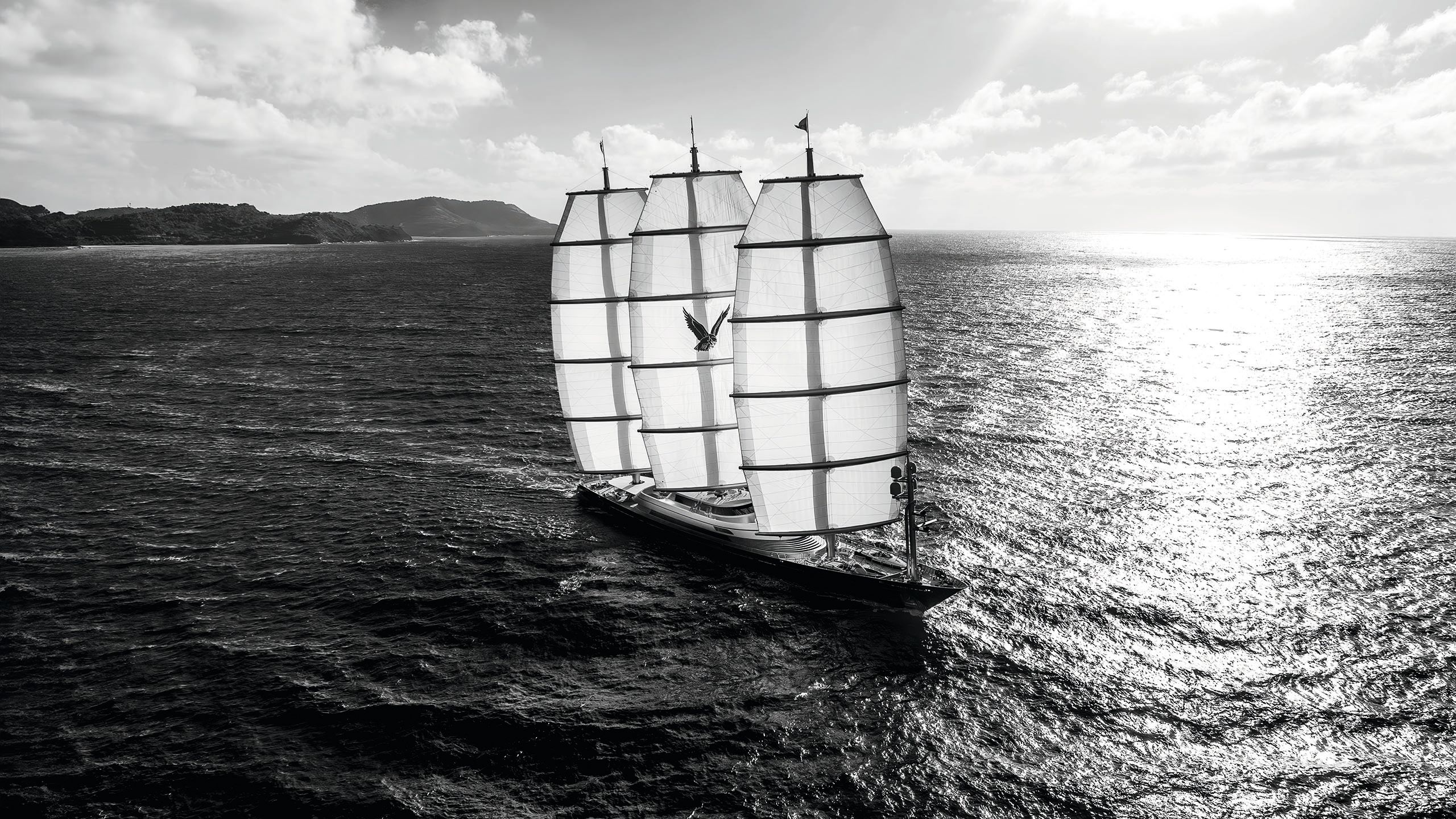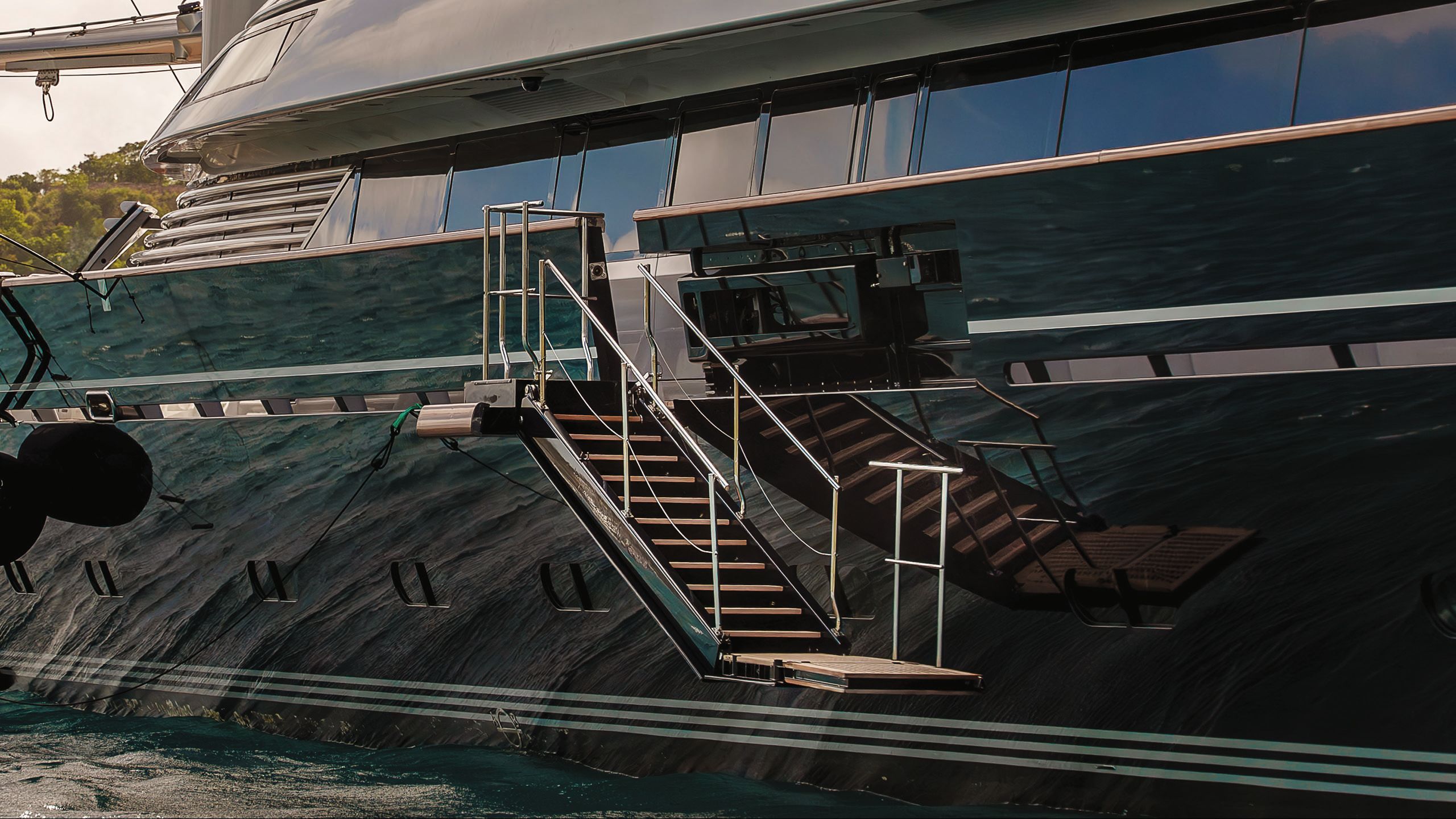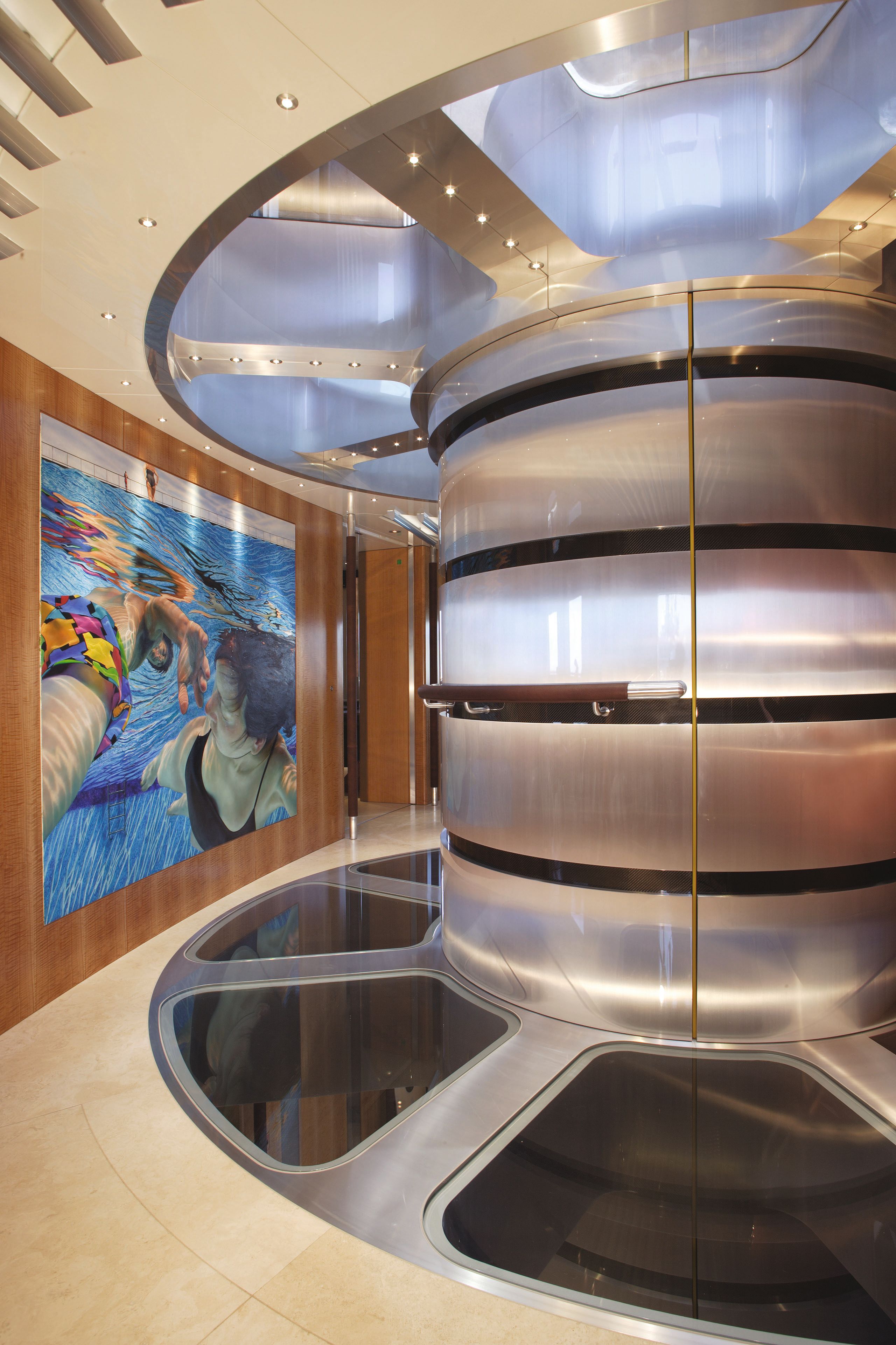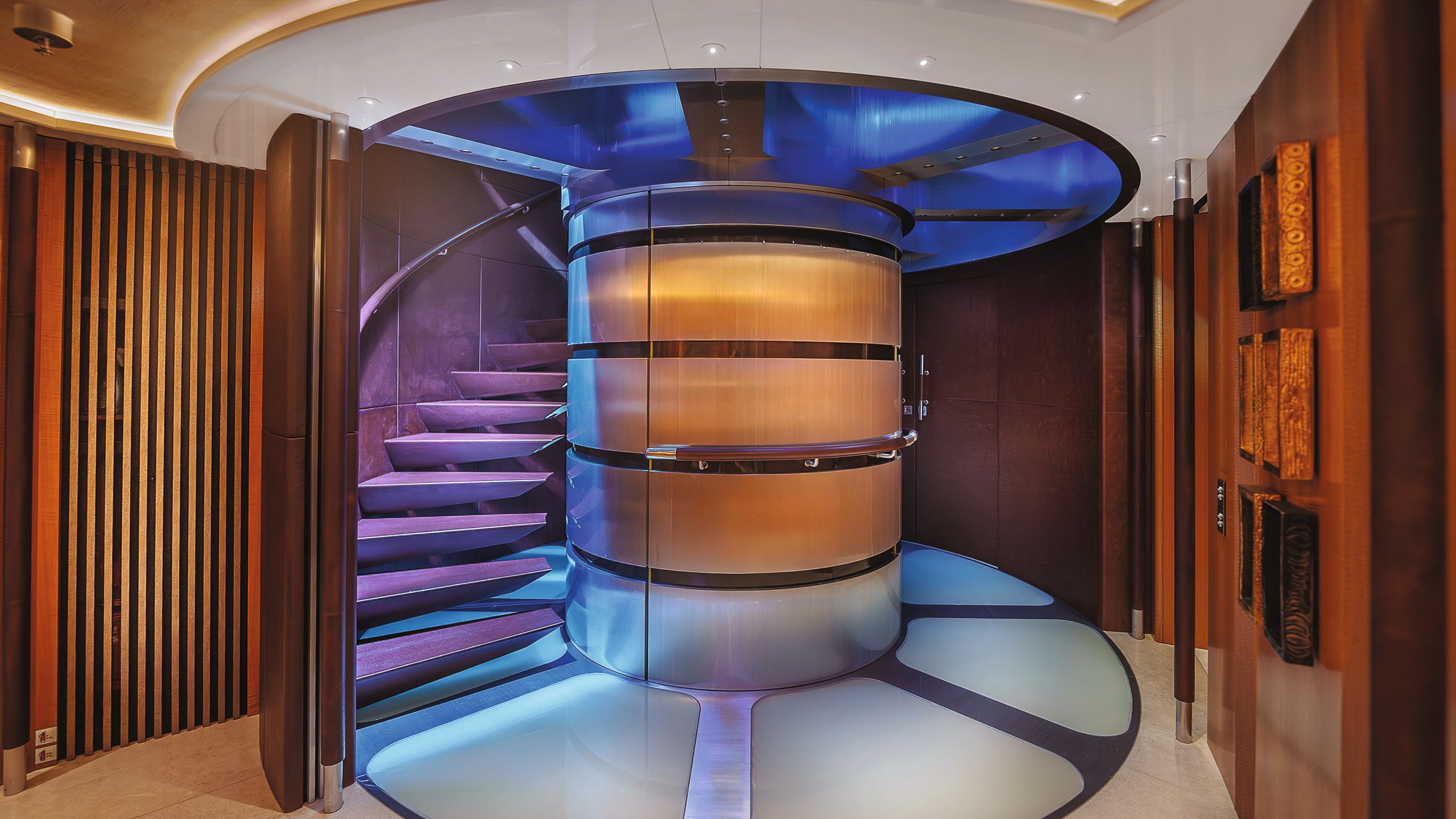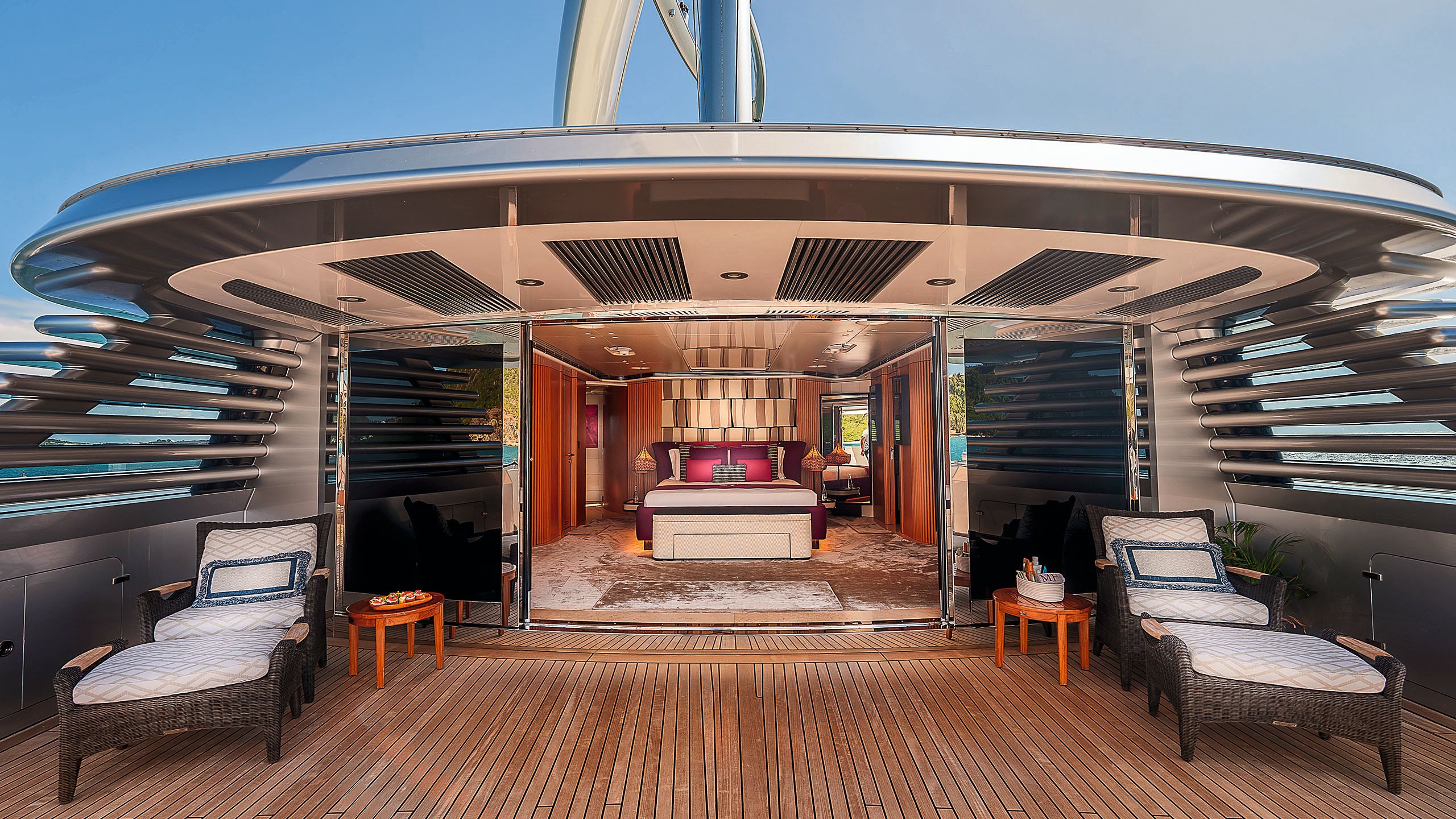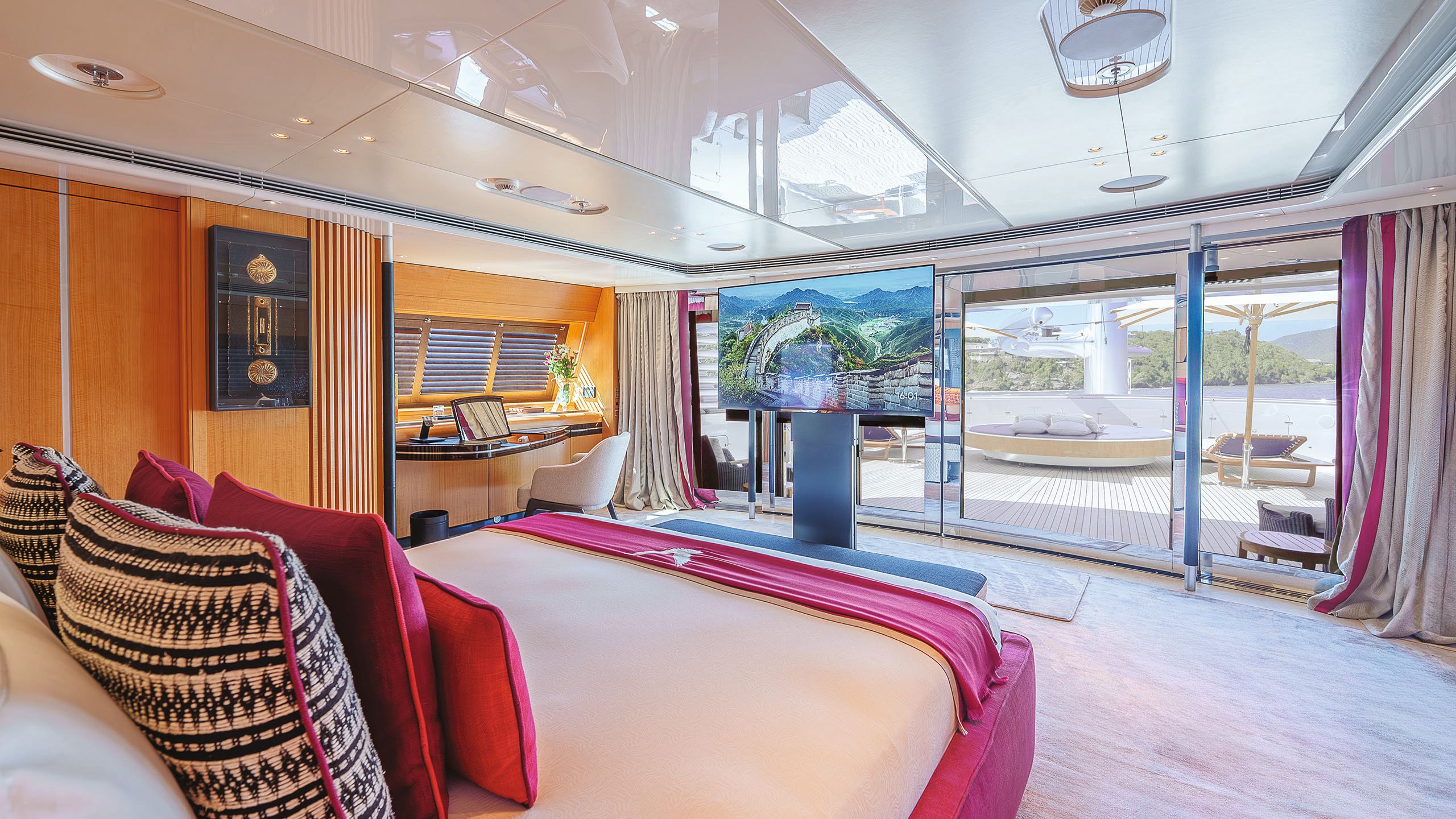SUPER FLY
On board 88m Maltese Falcon following her extensive refit
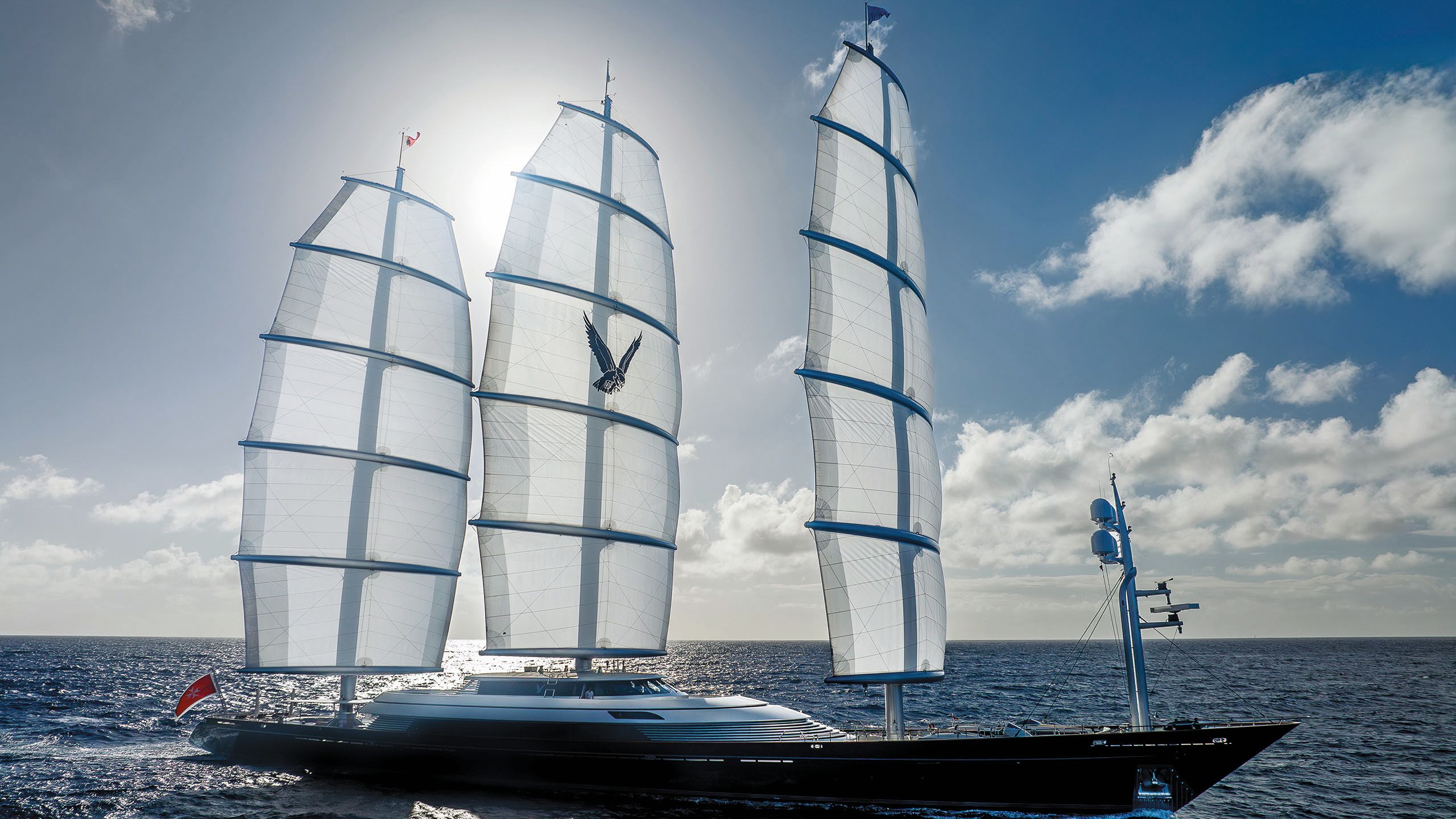
The rebirth of the legendary sailing yacht Maltese Falcon reveals modern interiors and enhanced efficiency while maintaining her legacy. Risa Merl watches the yachting icon take flight
BURGESS
At the relaunch of Maltese Falcon, the crowd on the dock is buzzing with anticipation. We’re at the Lusben yard in Livorno, Italy, awaiting the results of the first extensive refit since this groundbreaking 88-metre Perini Navi was delivered in 2006. From modernising the interior decor, overhauling the engine room and revamping her exterior deck areas, to repainting her hull, Maltese Falcon is ready to spread her DynaRig wings and fly again.
BURGESSFrom the outside, Maltese Falcon is as instantly recognisable post-refit as ever, flying 2,400 square metres of sail from her three rotating spars
BURGESSFrom the outside, Maltese Falcon is as instantly recognisable post-refit as ever, flying 2,400 square metres of sail from her three rotating spars
BURGESSFrom the outside, Maltese Falcon is as instantly recognisable post-refit as ever, flying 2,400 square metres of sail from her three rotating spars
BURGESSFrom the outside, Maltese Falcon is as instantly recognisable post-refit as ever, flying 2,400 square metres of sail from her three rotating spars
The word icon is thrown around too casually in yachting circles, but if any yacht deserves the label, it is Maltese Falcon. Commissioned by the late American venture capitalist and serial yacht owner Tom Perkins, she was the culmination of Perkins’ dual obsessions with innovation and sailing. Maltese Falcon was the first superyacht to install a DynaRig, which uses freestanding, rotating spars to fly its sails.
BURGESSThe hull was repainted to bring her back to her original Perini blue
BURGESSThe hull was repainted to bring her back to her original Perini blue
The DynaRig is famous for its huge sail area – nearly 2,400 square metres of sail can be set within six minutes – as well as being safe, efficient and easy to handle. Perkins once praised Maltese Falcon’s intuitive sail control system, saying, “I can teach any sailor how to handle the yacht in five minutes.”
The DynaRig also makes Maltese Falcon instantly recognisable on the water. While it might resemble square-rigger sailing yachts of yore, the modern take on this type of rig was shown to be twice as efficient as conventional square rigs by a research project in the 1960s. Advancements in lightweight carbon fibre and roller furling sails meant using a DynaRig became an actual possibility when Perkins began dreaming up the Maltese Falcon in the early 2000s.
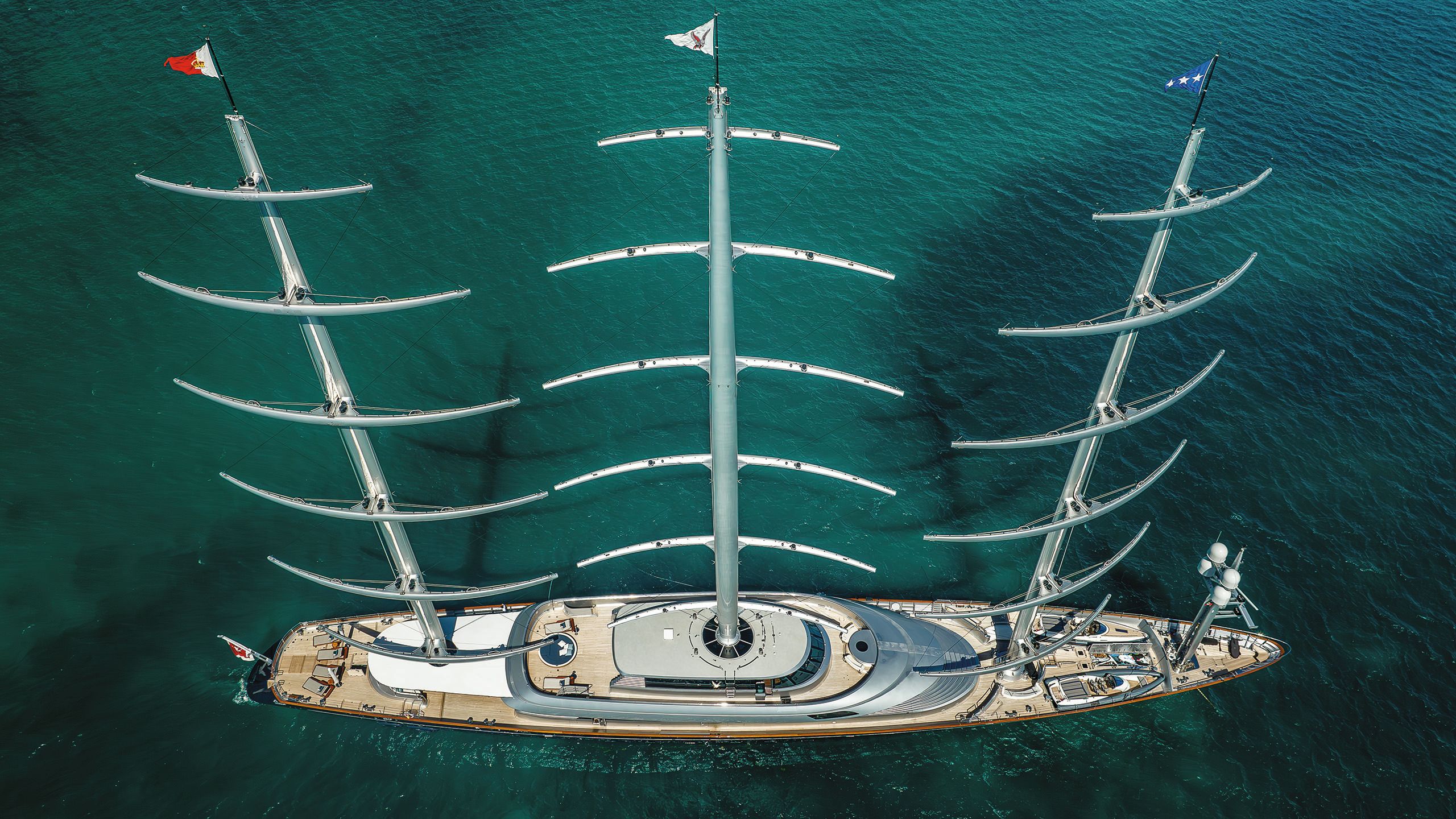
BURGESSMaltese Falcon employs a rig master as part of her crew. Each spar rotates independently and sails can be set in just six minutes
BURGESSMaltese Falcon employs a rig master as part of her crew. Each spar rotates independently and sails can be set in just six minutes
Dubbed the “Falcon Rig”, it was designed in collaboration with Dykstra Naval Architects, Damon Roberts and Perini Navi. Roberts went on to serve as technical advisor to Magma Structures, which joined forces with Southern Spars to install the second-ever DynaRig – on board the 105-metre Oceanco Black Pearl.
Perkins spent the better part of six years bringing Maltese Falcon to life – less time than he actually wound up owning her since he sold the boat to hedge-fund manager Elena Ambrosiadou in 2009, who promptly put her on the charter market.
The yacht became a charter hit, bewitching sailors who longed to experience her sailing prowess and unusual rig for themselves.
Maltese Falcon’s popularity meant she was often chartered back to back, leaving little time for refurbishments and updates along the way. “I think the boat was giving more than she was receiving,” says Francisca Bencini, Maltese Falcon’s purser and chief stew, during a tour at the relaunch. The new owning company, which quietly acquired the yacht through an off-market sale in 2022, sought to change this and give Maltese Falcon the love she deserved.
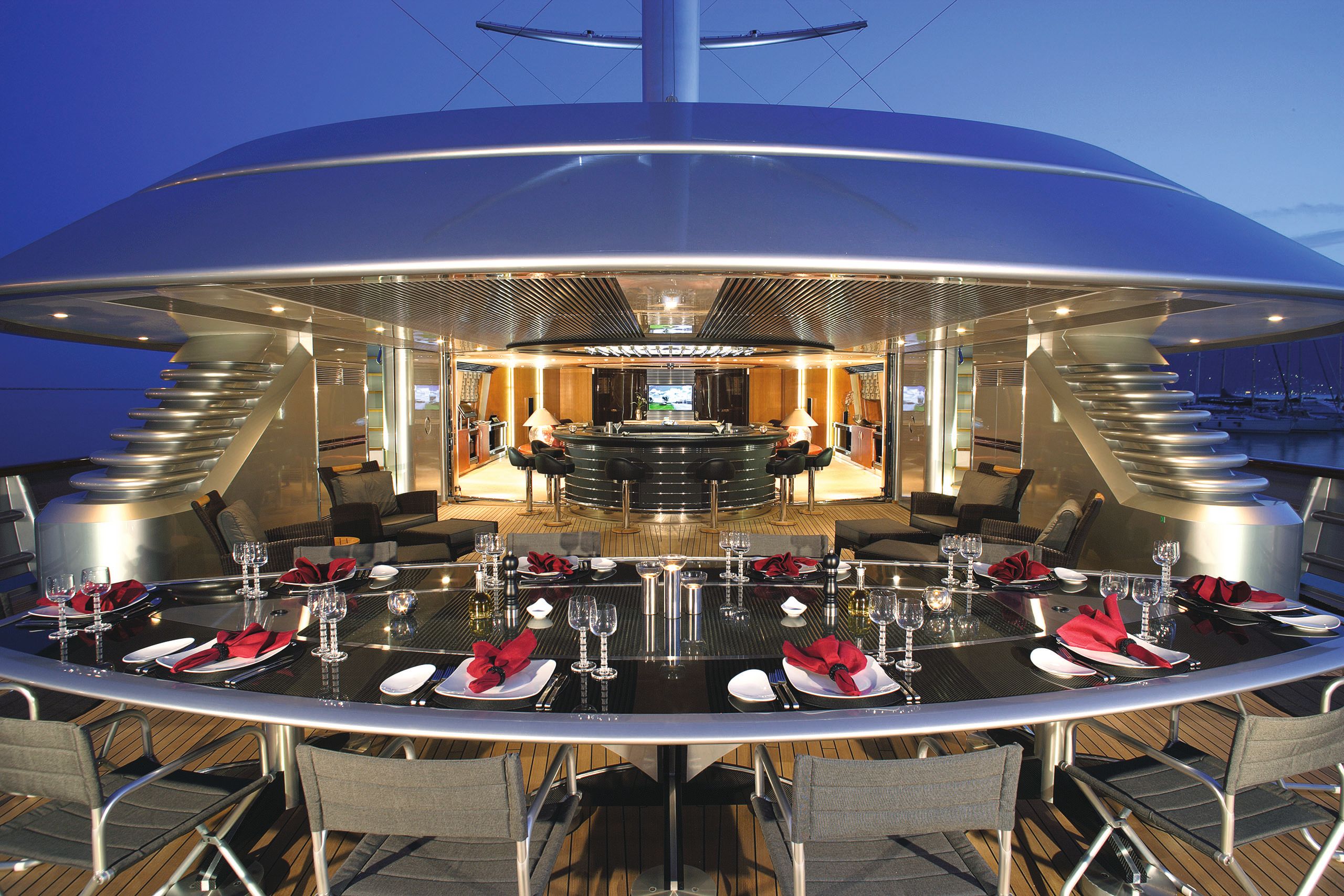
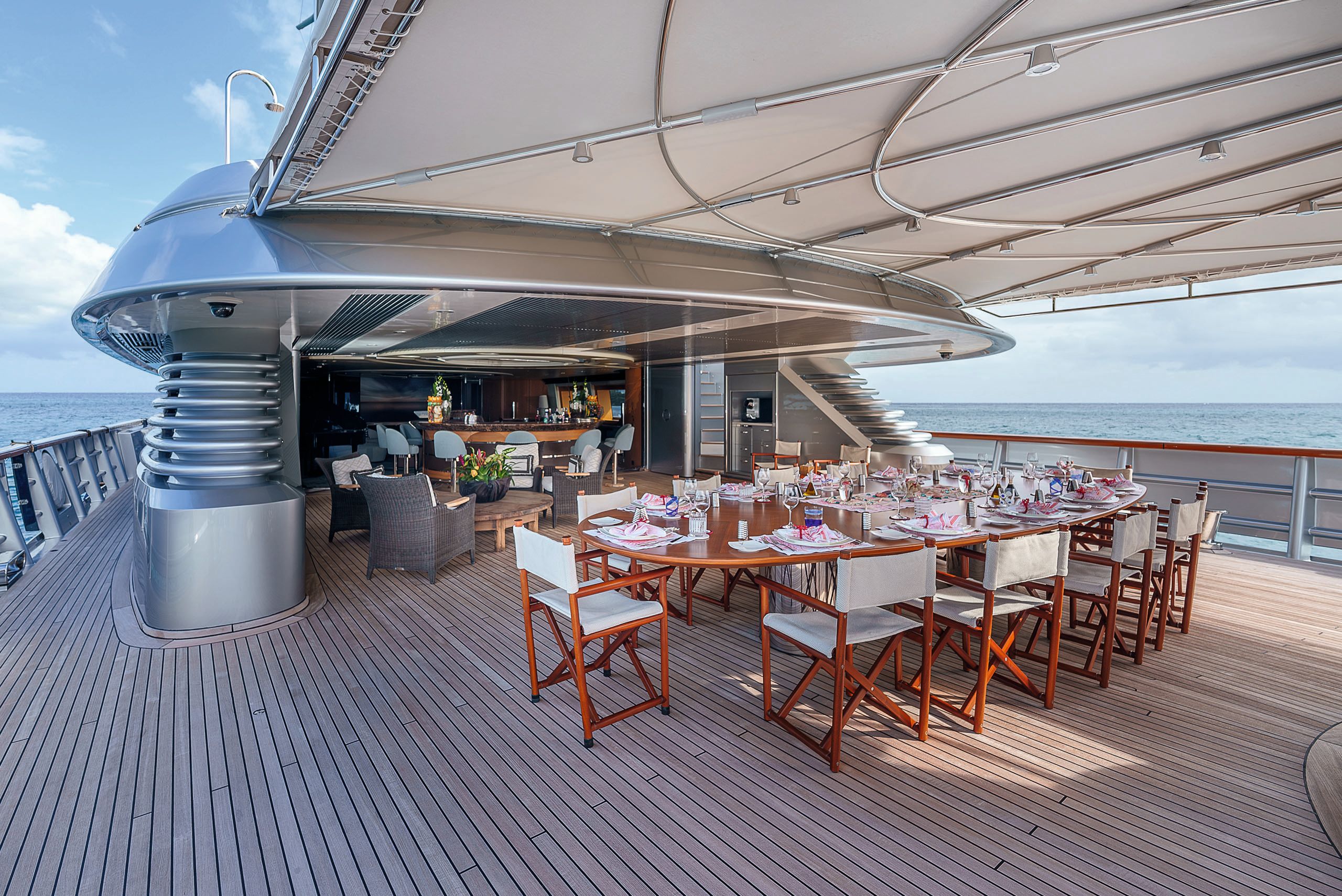
The main aft-deck, pre and post-refit, when it got a new and permanent awning
With a great yacht comes great responsibility, and Maltese Falcon’s history and icon status were considered in every element of the refit project, which aimed to preserve the yacht’s heritage while bringing her up to date. “This isn’t a yacht that Tom Perkins had in his mind for six months, it’s something he had in his mind for years,” says Maltese Falcon’s captain, Pierfrancesco Cafaro. “Everything you’re going to replace, touch, paint or update is something that has to be considered to the same level.”
In November 2022, she checked into Lusben, Azimut-Benetti’s refit yard. “The biggest challenge, but also the most exciting part of the job, has been for us to deeply understand and fully grab the original vision of Tom Perkins, matching it with the owner’s modern concept,” says Giorgio Casareto, Lusben’s former general manager.
BUGSY GEDLECK
BUGSY GEDLECK
BURGESS
BURGESS
The central staircase (pre-refit, left) was carefully preserved by restoring the sharkskin leather covering the walls and stair treads (post-refit, right)
Making this challenge somewhat easier was the fact that many of the workers refitting Maltese Falcon had been a part of her original build. “For a lot of the works, we called the person who did it originally, so they spent less time to understand how it works and how to fix it,” says Captain Cafaro.
The whirlwind refit aimed to cover a huge amount of ground in just over six months. “We had a very long work list,” says Cafaro. “We worked constantly for eight months. No weekends, no holidays, just a break for Christmas.” The overall brief for the refit was to modernise Maltese Falcon and bring her up to date in every way possible, including interior aesthetics, machinery and technical systems, to name a few.
“The real challenge was to restore its grandeur without altering its essence, creating a thoughtful conversation between the old and the new”
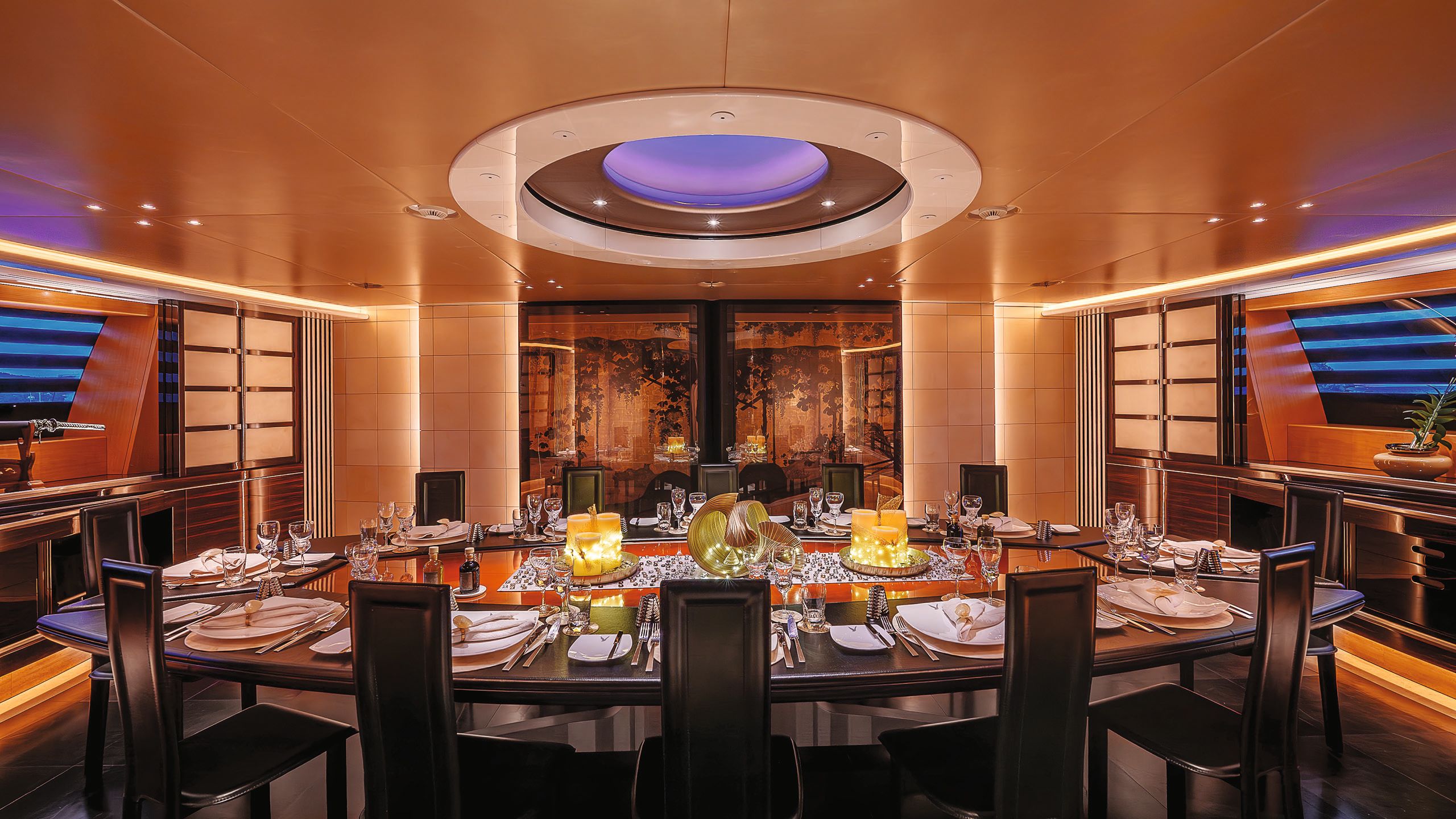
It’s no surprise that after nearly two decades the original interiors were a bit outdated. Maltese Falcon’s new owner called upon designer Emanuela Esposito, who had collaborated with the owner before. While this was her first superyacht project, Esposito was familiar with Maltese Falcon.
“I had always admired this iconic ship from a distance, catching glimpses of it at sea,” she says. “The first time I saw Maltese Falcon up close, anchored at the dock like a giant, sleek sea creature, it was breathtaking. The power it exudes, its warrior-like presence and that dynamic, timeless silhouette – it was pure adrenaline!”
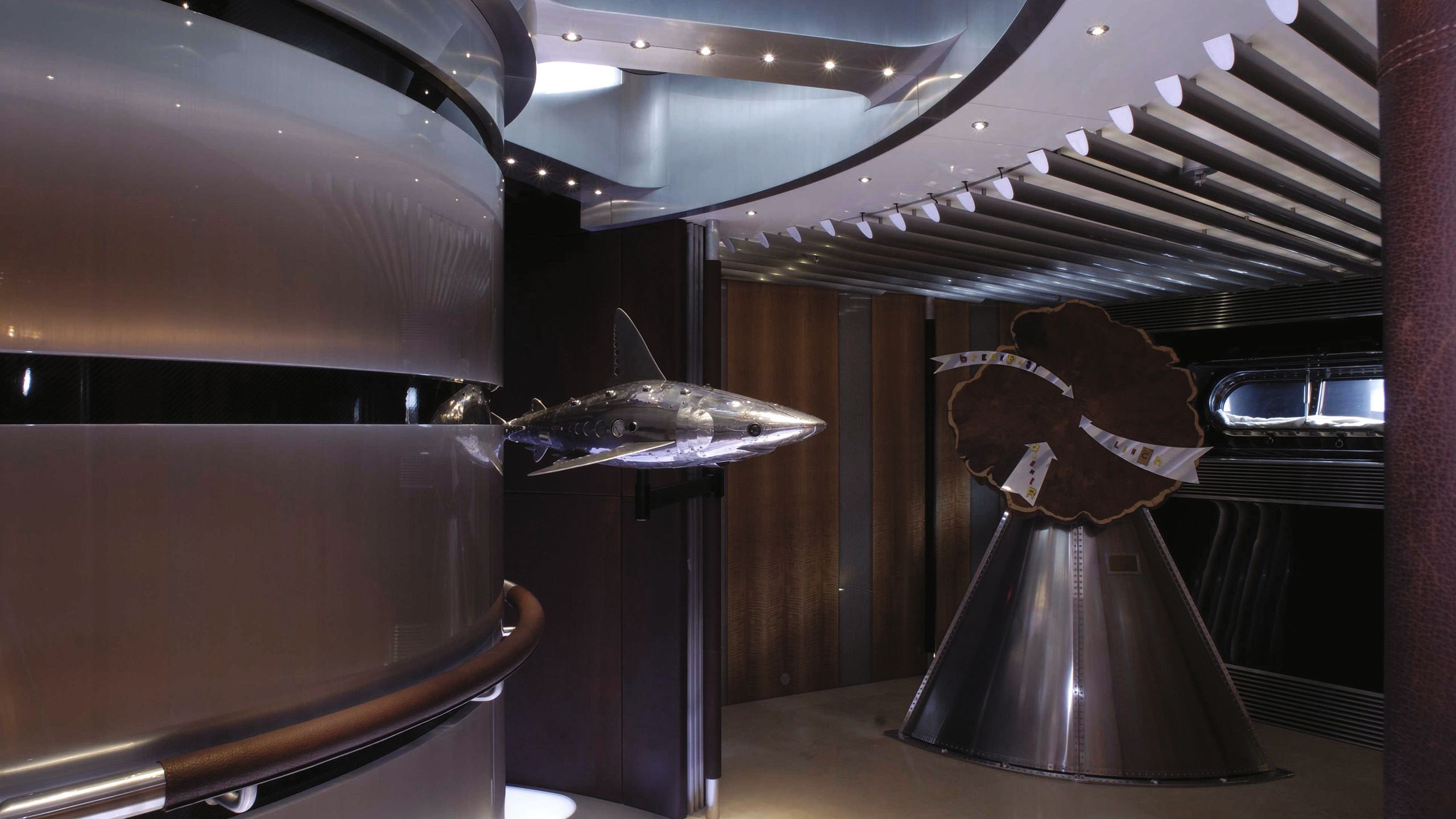
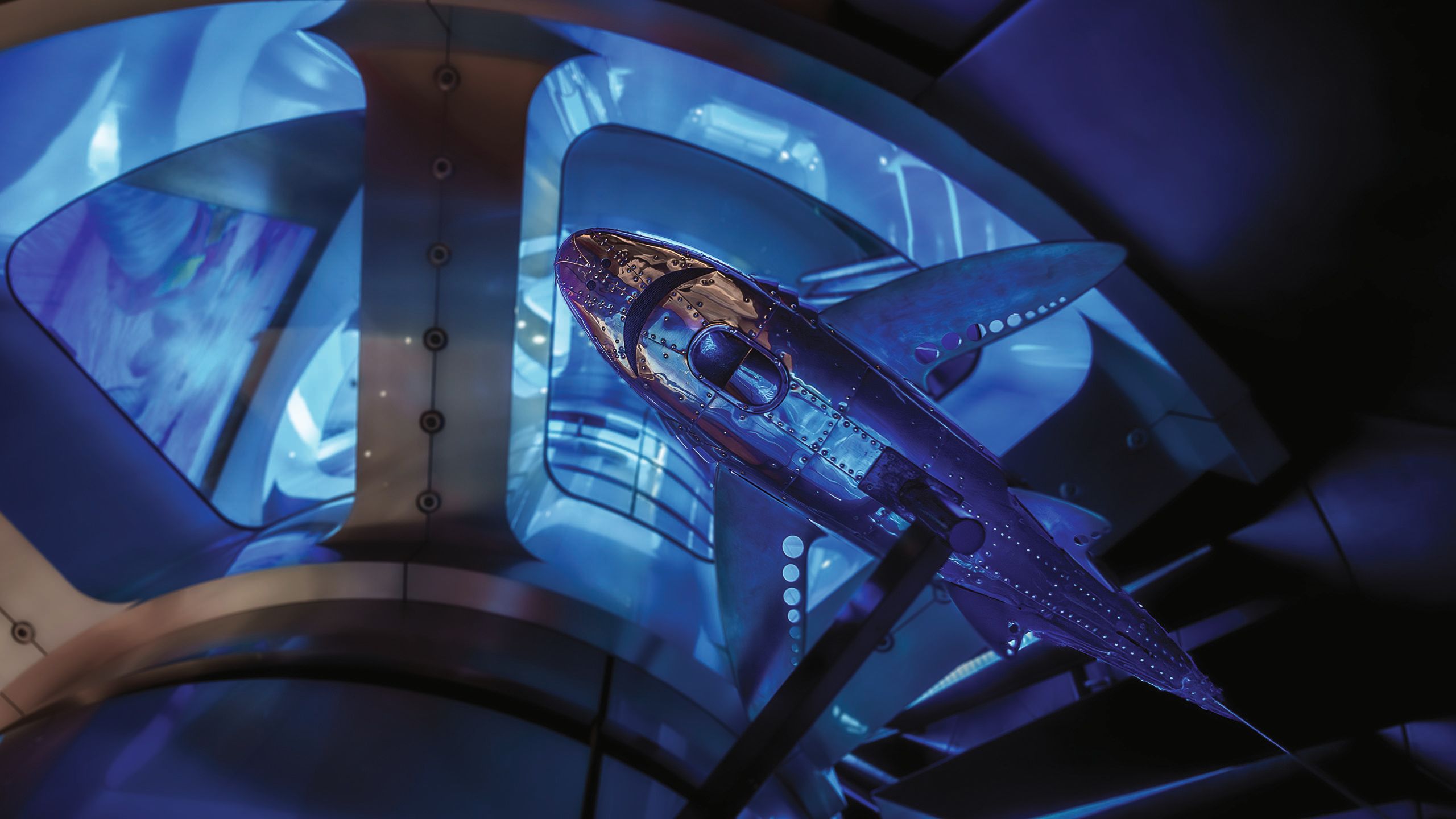
A key feature of the original Maltese Falcon, the three deck atrium skylight that surrounds the stairwell has been retained, as has the Silver Shark artwork by Emmanuel Chapalain that “swims” around it in the lower atrium
Pre-refit, Maltese Falcon had dark interiors, defined by black carbon fibre, black leather, shiny stainless steel and bright red detailing. The brief for the new interiors was to make them feel “more welcoming, warm and sophisticated”, which largely translated to brightening up the living spaces so the yacht would be more homely for the owner – and more desirable to charter clients.
The interiors were reimagined with natural fabrics, such as linens and raw silks. Beige and cream soft goods play against the Macassar ebony details seen in the furnishings. Esposito designed and custom-made all the furniture, lamps and upholstery with the help of Italian artisans.
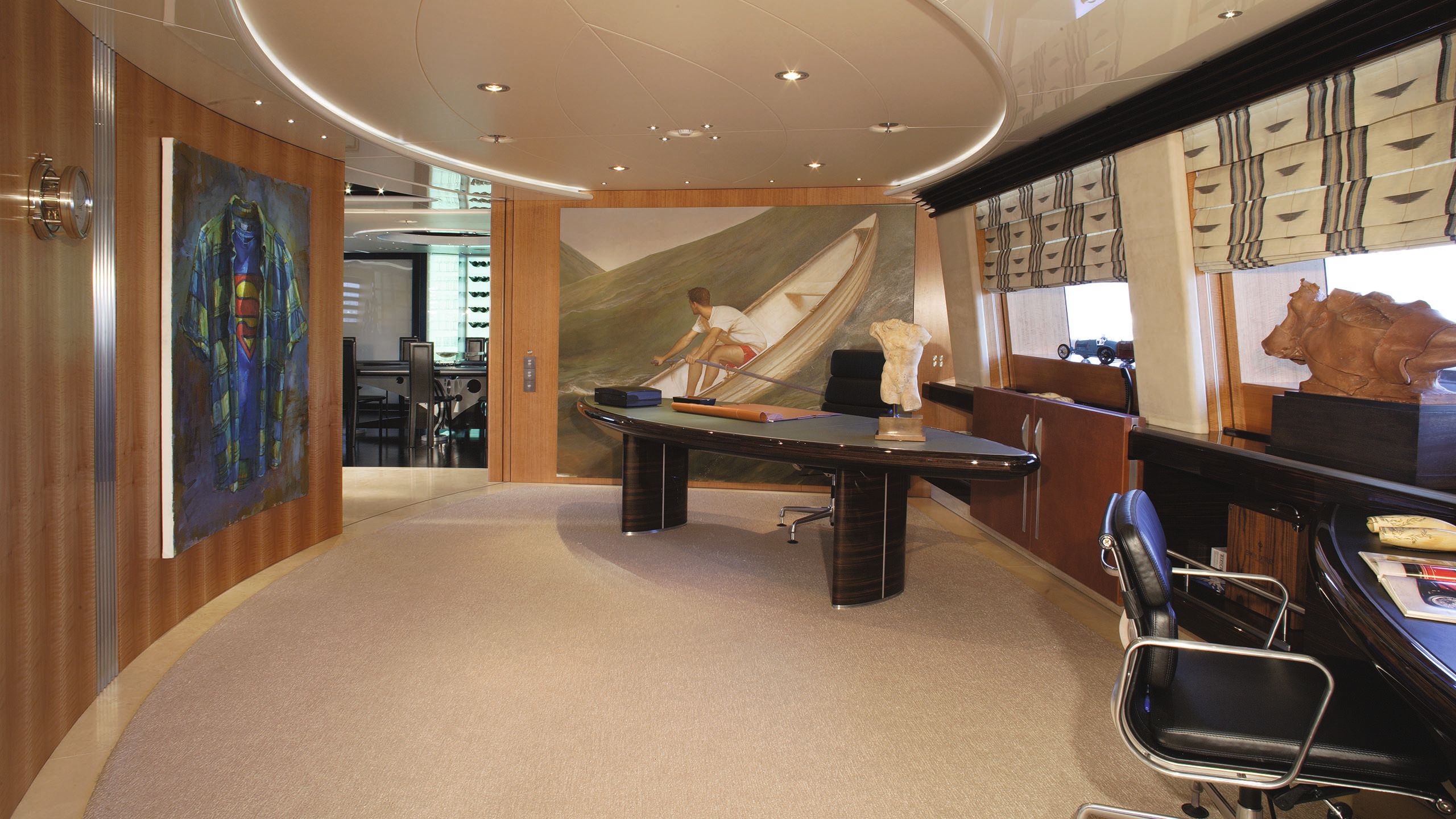
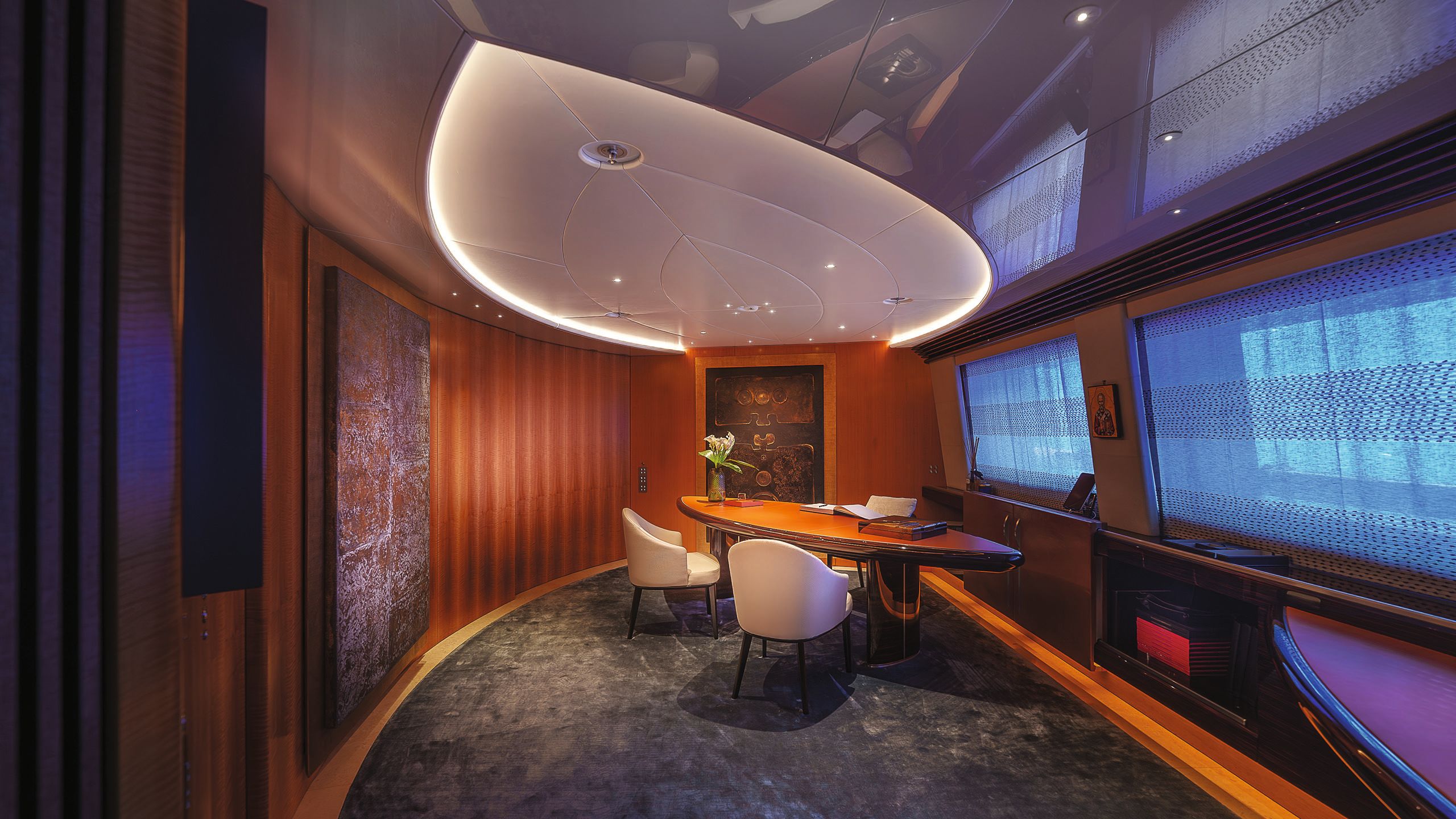
Throughout the interiors, the designer made use of the original joinery and softened it by replacing steel details with woven leather elements, as seen in the main deck office. The lighting plan was also revamped with warm LEDs
“The real challenge was to restore its grandeur without altering its essence,” says Esposito. “It was all about creating a thoughtful conversation between the old and the new.” While the interiors look strikingly different, it was not a total gut job. Esposito was able to make use of the yacht’s existing honey-coloured wood panelling and added woven leather elements to replace honeycomb panels and steel slats.
“The staircase, the magnificent centrepiece of this yacht, was carefully preserved,” says Esposito of the focal point stairway that’s lit by a three-deck atrium skylight. “The burgundy sharkskin leather covering the steps and walls was restored to its original splendour.” A falcon statue, found in the hallway just off the dining saloon, is another remnant of the original yacht.
DYNAMIC FUTURE FOR THE DYNARIG
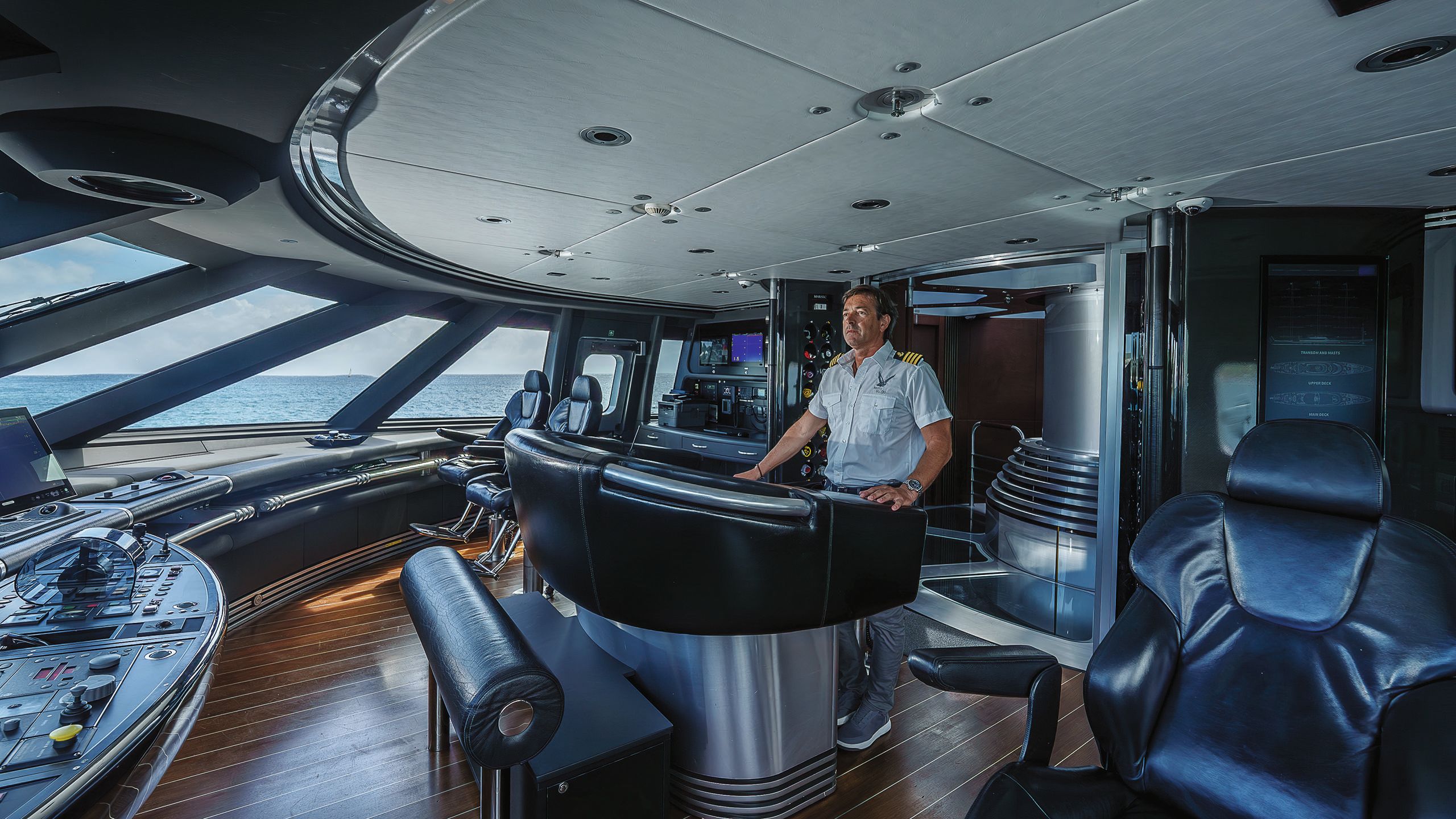
DynaRigs are lauded for their ease of use, low operational costs and safety, yet to date, Maltese Falcon and 106.7-metre Oceanco Black Pearl, delivered in 2018, are the only superyachts to have used the innovative rig. But, with three recently announced DynaRig projects under way at Southern Spars’ 5,000-square-metre manufacturing facility in Poland, is the tide turning on this sail-powered solution?
Due to launch in 2026, one 100-metre-plus superyacht will have twice the sail area of Maltese Falcon, flying 3,500 square metres of sail on its twin DynaRig masts. “The owner was attracted to the DynaRig as they can set sail within seven to eight minutes with a single-handed remote control, whilst sailing the boat easily and safely at maximum performance,” says Rudy Jurg, head of sales for the DynaRig and AeroRig at Southern Spars.
“With no highly loaded sheets or runners and hardware on deck, it is very safe for owners and guests to move around the decks while under sail – even when tacking and gybing.”
The second project will see two commercial-type DynaRigs stepped for the first time on a 57-metre catamaran with a sail area of 1,600 square metres. Built by Australia’s Echo Yachts, the aluminium expedition vessel features design from Dykstra Naval Architects and One2three Naval Architects and will be the world’s largest sailing catamaran when launched.
“A catamaran is more stable than a monohull and this must to be considered at the design and engineering phase,” says Jurg. “Extra material will need to be placed into the rig during construction. Sailing loads will need to be carefully monitored as its easier to push sailing performance much harder than with a monohull.”
While the third project – a 75-metre Greenpeace vessel designed by Dykstra to be built at Freire Shipyard – might be commercial in nature, it shows sustainable solutions that can filter down to the yachting sector. In addition to the 2,000 square metres of sails by North Sails, it will feature alternative fuel systems such as hydrogen, battery packs and solar.
DynaRigs are lauded for their ease of use, low operational costs and safety, yet to date, Maltese Falcon and 106.7-metre Oceanco Black Pearl, delivered in 2018, are the only superyachts to have used the innovative rig. But, with three recently announced DynaRig projects under way at Southern Spars’ 5,000-square-metre manufacturing facility in Poland, is the tide turning on this sail-powered solution? Due to launch in 2026, one 100-metre-plus superyacht will have twice the sail area of Maltese Falcon, flying 3,500 square metres of sail on its twin DynaRig masts.
“The owner was attracted to the DynaRig as they can set sail within seven to eight minutes with a single-handed remote control, whilst sailing the boat easily and safely at maximum performance,” says Rudy Jurg, head of sales for the DynaRig and AeroRig at Southern Spars. “With no highly loaded sheets or runners and hardware on deck, it is very safe for owners and guests to move around the decks while under sail – even when tacking and gybing.”
The second project will see two commercial-type DynaRigs stepped for the first time on a 57-metre catamaran with a sail area of 1,600 square metres. Built by Australia’s Echo Yachts, the aluminium expedition vessel features design from Dykstra Naval Architects and One2three Naval Architects and will be the world’s largest sailing catamaran when launched. “A catamaran is more stable than a monohull and this must to be considered at the design and engineering phase,” says Jurg.
“Extra material will need to be placed into the rig during construction. Sailing loads will need to be carefully monitored as its easier to push sailing performance much harder than with a monohull.” While the third project – a 75-metre Greenpeace vessel designed by Dykstra to be built at Freire Shipyard – might be commercial in nature, it shows sustainable solutions that can filter down to the yachting sector. In addition to the 2,000 square metres of sails by North Sails, it will feature alternative fuel systems such as hydrogen, battery packs and solar.
Espositio envisioned a style that was eclectic and cosmopolitan, and while lighter and brighter, the new interior is by no means dull. There’s a nod to Asian-inspired design, as seen in the panelled doors in the dining area and artworks on board, including one adorning the headboard in the master suite. Pops of colour abound, and the Tencel carpet colours are purposely unconventional, each deck with a different shade underfoot.
The brief for the new interiors was to make them feel “more welcoming, warm and sophisticated”
While on board, I overhear a crew member giving instructions to bring the owner’s luggage up to the VIP. “The owner likes to switch between the VIP and master depending on the trip,” says chief stew Bencini. Upon entering the VIP cabin, it’s easy to see why. It is like a treasure chest, filled with oriental artworks, photographs and a Bordeaux leather trunk.
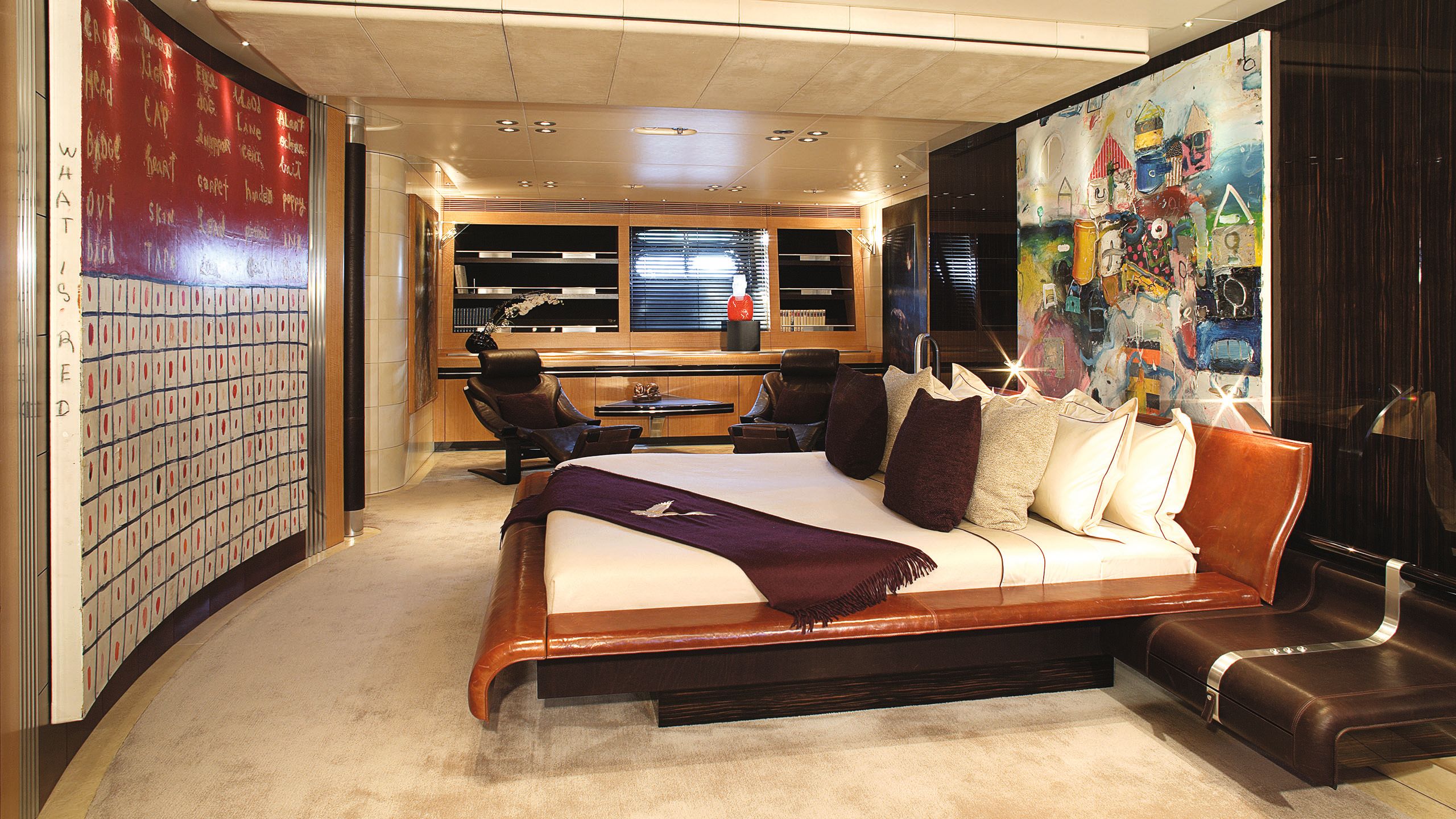
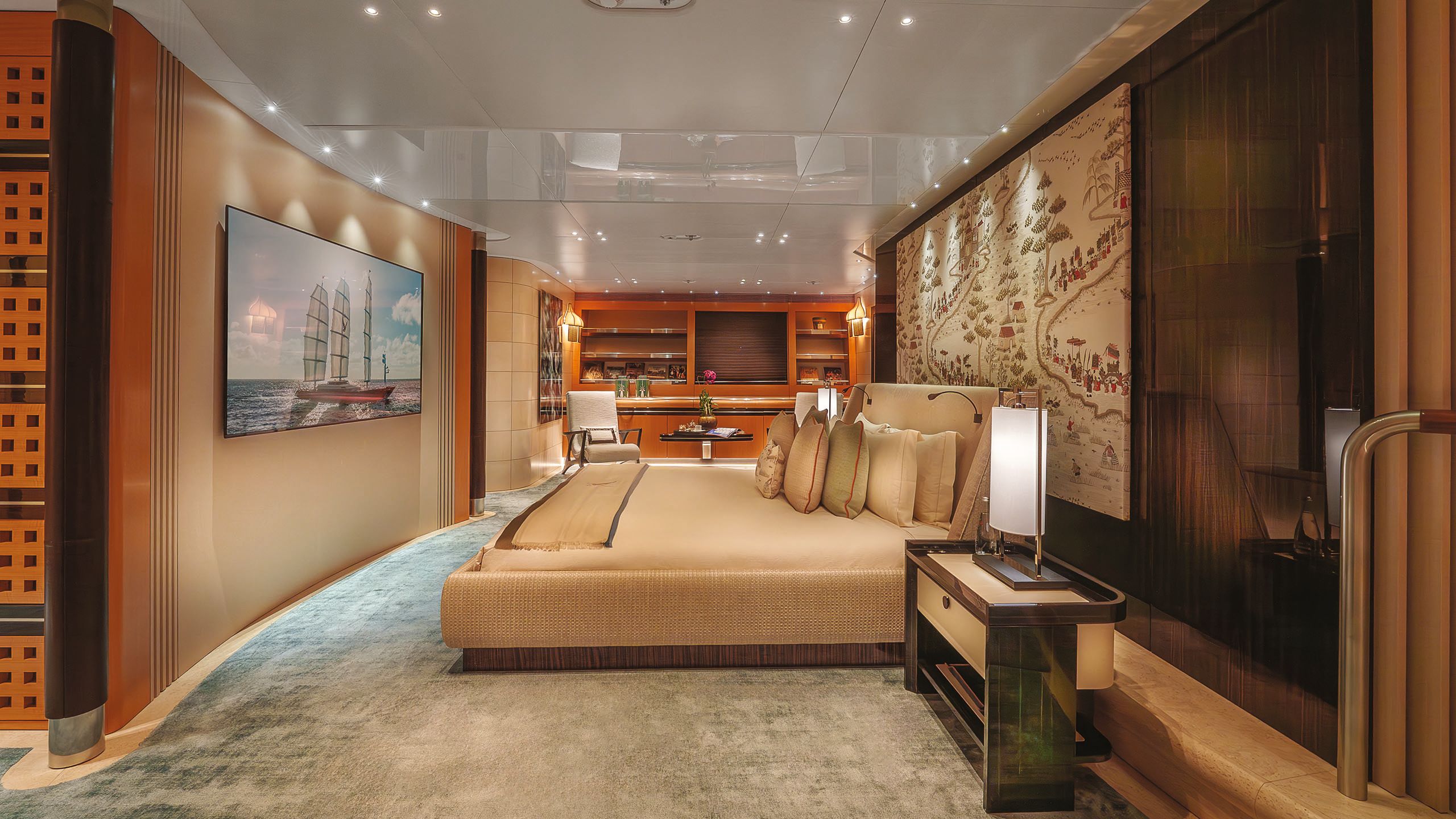
The owner’s fullbeam lower deck cabin, pre and post-refit
The black bathrooms, originally clad in carbon fibre, have been reimagined with resins containing marble powders and outfitted with generous portoro and navona travertine countertops, creating smooth and luminous surfaces. The refit also tackled the lighting design, which was initially somewhat cold. All of the lighting on board was redesigned and replaced with indirect LED dim-to-warm bulbs. The new opalescent “moon” leather ceilings enhance the lights, making the interior feel more vibrant.
“The interiors were reimagined with natural fabrics, such as linens and raw silks. Beige and cream play against Macassar ebony details”
While the interior decor is noticeably different, much of the work that took place isn’t apparent to the naked eye. An enormous undertaking was replacing all of the cables on board, subbing out data-only cables from 2006 with cables that combine data and power. More efficient lighting and new cables helped to reduce the yacht’s power consumption, says Cafaro. “In the hotel department, we have 35 per cent less consumption,” he says.
BURGESS
BURGESS
A major element of the refit centred around the engine room and machinery. New generators were installed, and while the engines themselves were serviced rather than replaced, Maltese Falcon now benefits from a new electronic system to manage them – these two changes lower gas emissions by 45 per cent.
“Shaping the future for Lusben means sustainable technology,” says Casareto. “New gensets, a Tier III-compliant selective catalytic reduction system and main engine silencers are now part of her green beating heart.”
BURGESSThe VIP cabin is on the bridge deck and overlooks the aft deck, rivalling the owner’s fullbeam lower deck cabin
BURGESSThe VIP cabin is on the bridge deck and overlooks the aft deck, rivalling the owner’s fullbeam lower deck cabin
The propellers and shaft were also serviced with the aims of reducing friction, lowering consumption and enhancing speed. And when this bird wants to fly at speed, she certainly can. “Many of the guests love Maltese Falcon because they love to sail, and she’s a very good sailing yacht,” says Captain Cafaro.
“Even with 15 to 20 knots of wind, if you get the right bearing, you can sail with eight to 10 knots of speed. It’s incredible.” The masts and rig were serviced during the refit, and one of Maltese Falcon’s crew members is a designated rig master, tasked with continuing its maintenance along the way.
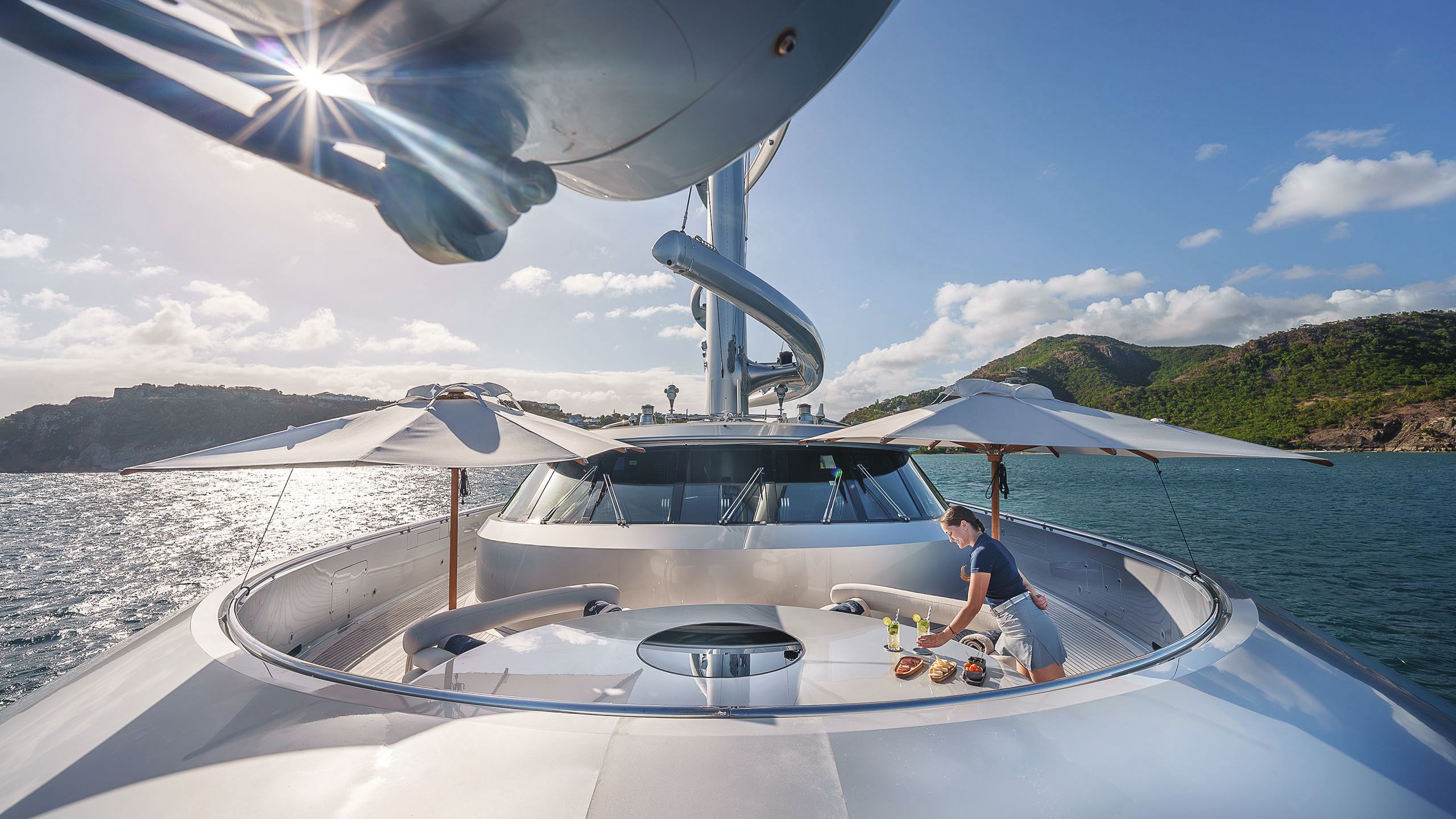
BURGESS
BURGESS
“There is no greater feeling than to sail under these sails and technology,” says Maltese Falcon’s charter manager, Hannah Chapelier Zenere of Burgess. “Furthermore, the crew makes it worth every minute from their in-depth knowledge of the yacht.”
From the outside, Maltese Falcon doesn’t look remarkably different, and that was the intention. “The only thing that you can see from outside in terms of changes will be the [hull] colour and the cockpit awning,” says Cafaro. “The boat will always be an iconic yacht.”
In terms of what was changed, the hull colour was lightened and restored to her original “Perini-blue” shade and the profile is only slightly augmented by the addition of a new permanent awning over the main deck cockpit.
“Her roof extension on the aft main deck adds to her design and practicality, offering more shade and entertainment space,” says Chapelier-Zenere. The spa pool, formerly found on the upper deck just aft of the VIP, has been removed. In its place is a new round sunbed that can be rotated to face the sun, shaded with a retractable cover and even has a built-in mister to cool you off.
In terms of what was changed, the hull colour was lightened and restored to her original “Perini-blue” shade and the profile is only slightly augmented by the addition of a new permanent awning over the main deck cockpit.
“Her roof extension on the aft main deck adds to her design and practicality, offering more shade and entertainment space,” says Chapelier-Zenere. The spa pool, formerly found on the upper deck just aft of the VIP, has been removed. In its place is a new round sunbed that can be rotated to face the sun, shaded with a retractable cover and even has a built-in mister to cool you off.
“The only change you can see from outside is the hull colour and the cockpit awning. The boat will always be an iconic yacht”
“The boat will always be an iconic yacht”
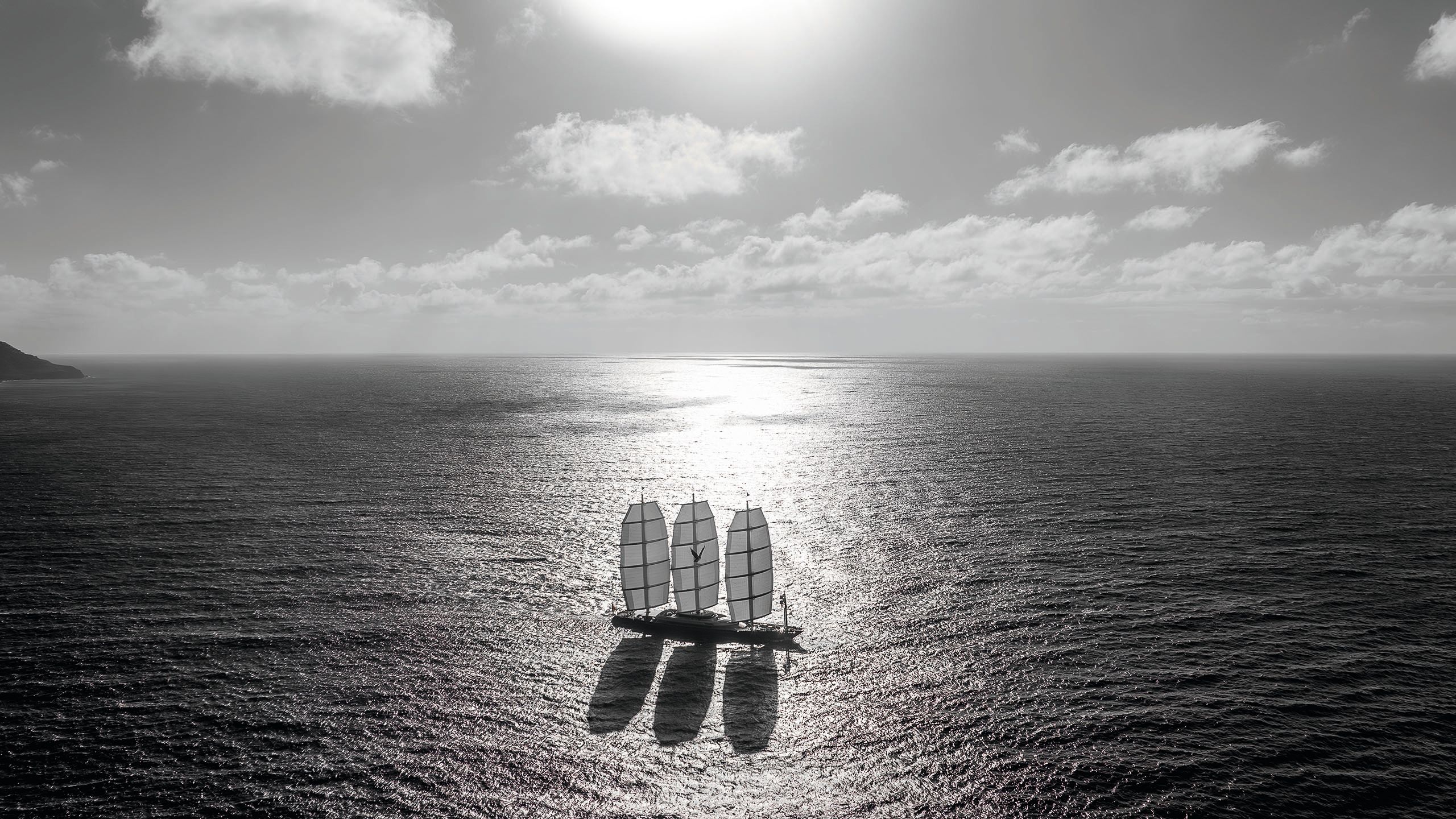
Charter guests will appreciate this as well as other amenities that solidify Maltese Falcon’s standing as a charter star. New with the refit, her massage and gym areas have been updated with the latest machines and crew knowledge. In addition to an indoor cinema, she also offers an outdoor movie viewing experience. “Her outdoor cinema, with films projected on the bottom sail, brings the al fresco cinema experience to another level,” says Chapelier-Zenere.
And certainly, even after nearly 20 years since her delivery, the fascination with Maltese Falcon does not seem to have waned. The yacht was relaunched in the summer of 2023, but she was so busy with charter bookings that it took months until time could be set aside for a proper photoshoot. Now, a year after her re-launch, the efforts of her intensive refit can be fully appreciated. Waiting might be the hardest part, but seeing Maltese Falcon be reborn and take flight was certainly worth the wait.
First published in the November 2024 issue of BOAT International. Get this magazine sent straight to your door, or subscribe and never miss an issue.
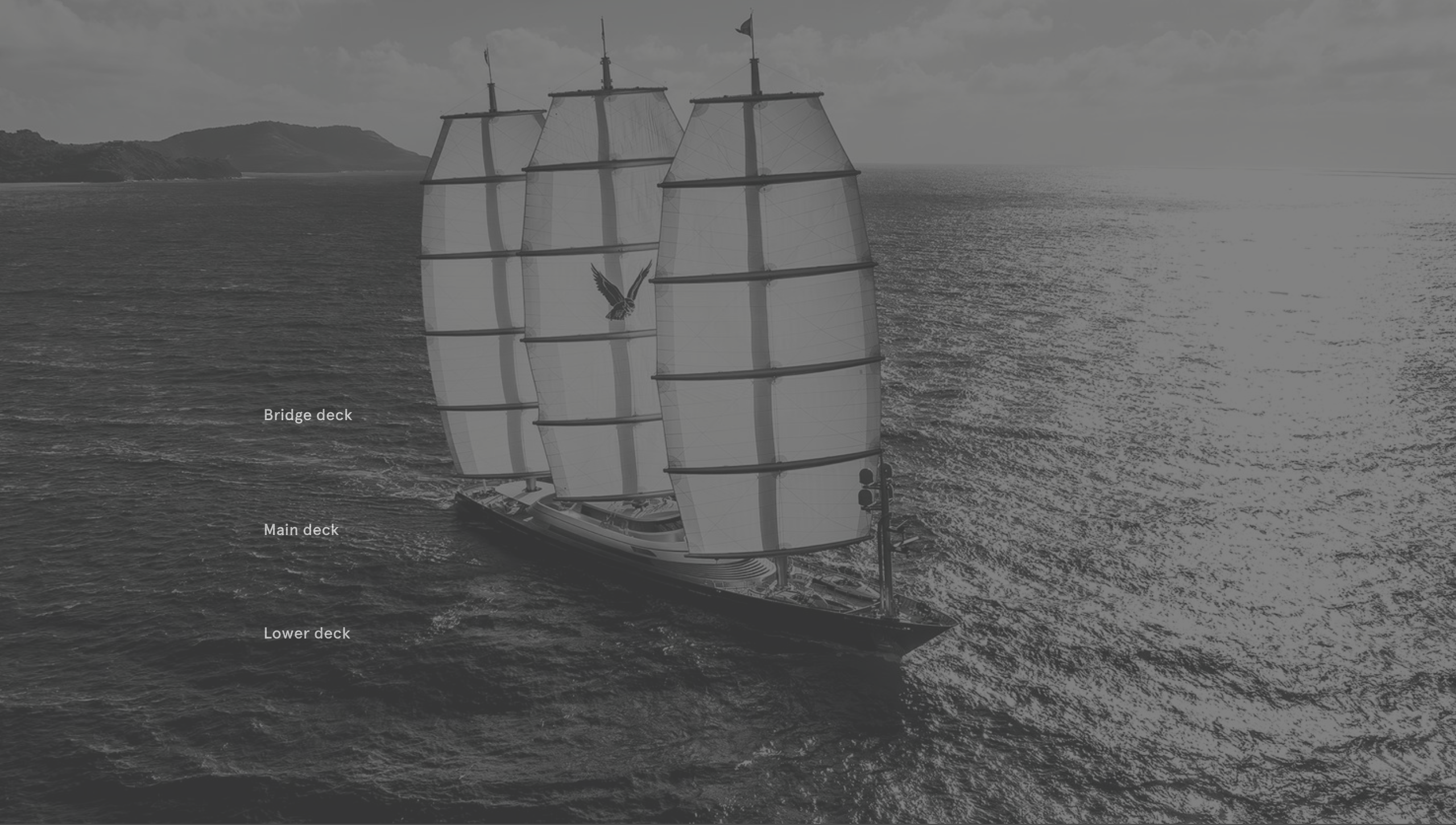
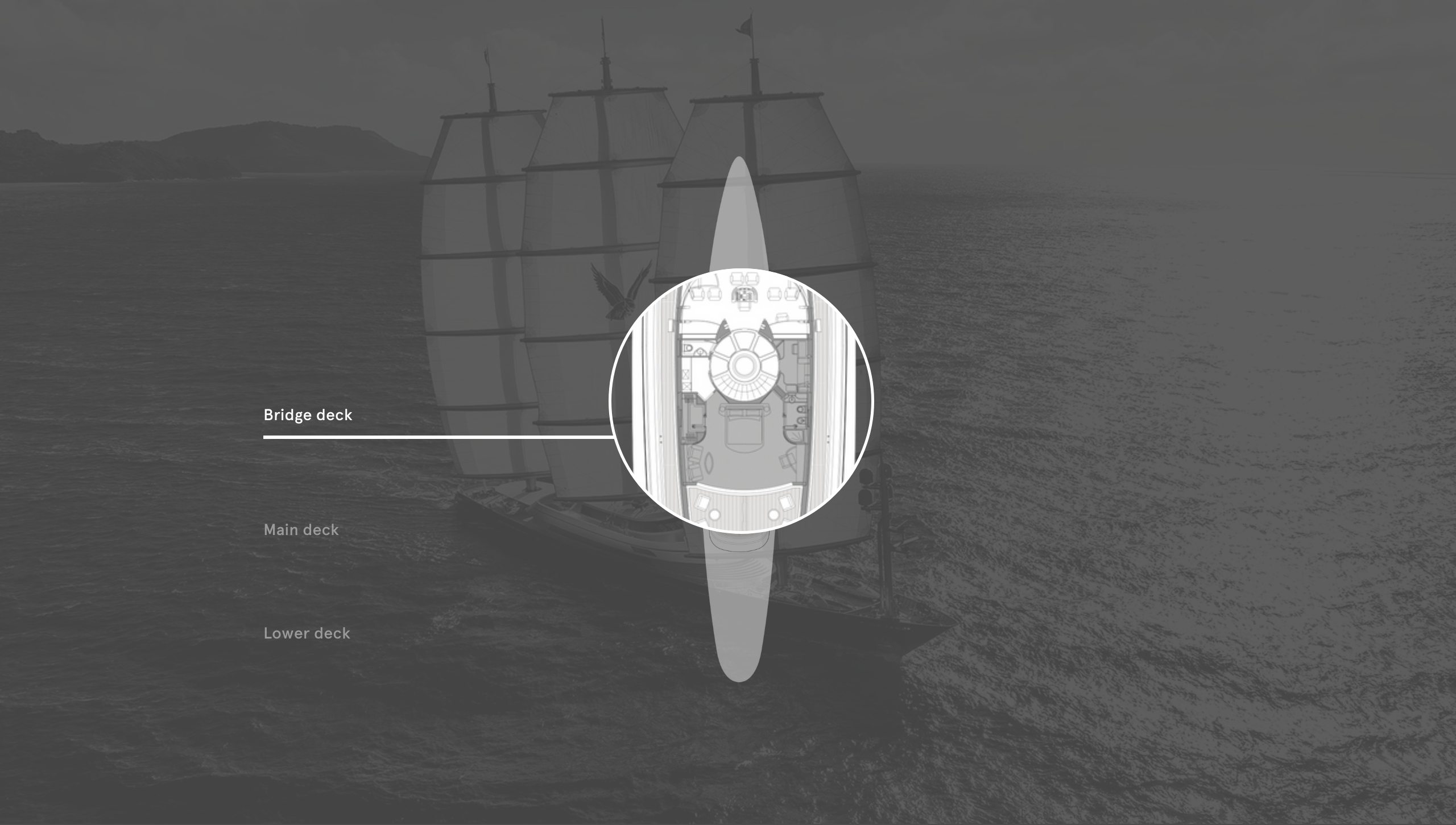
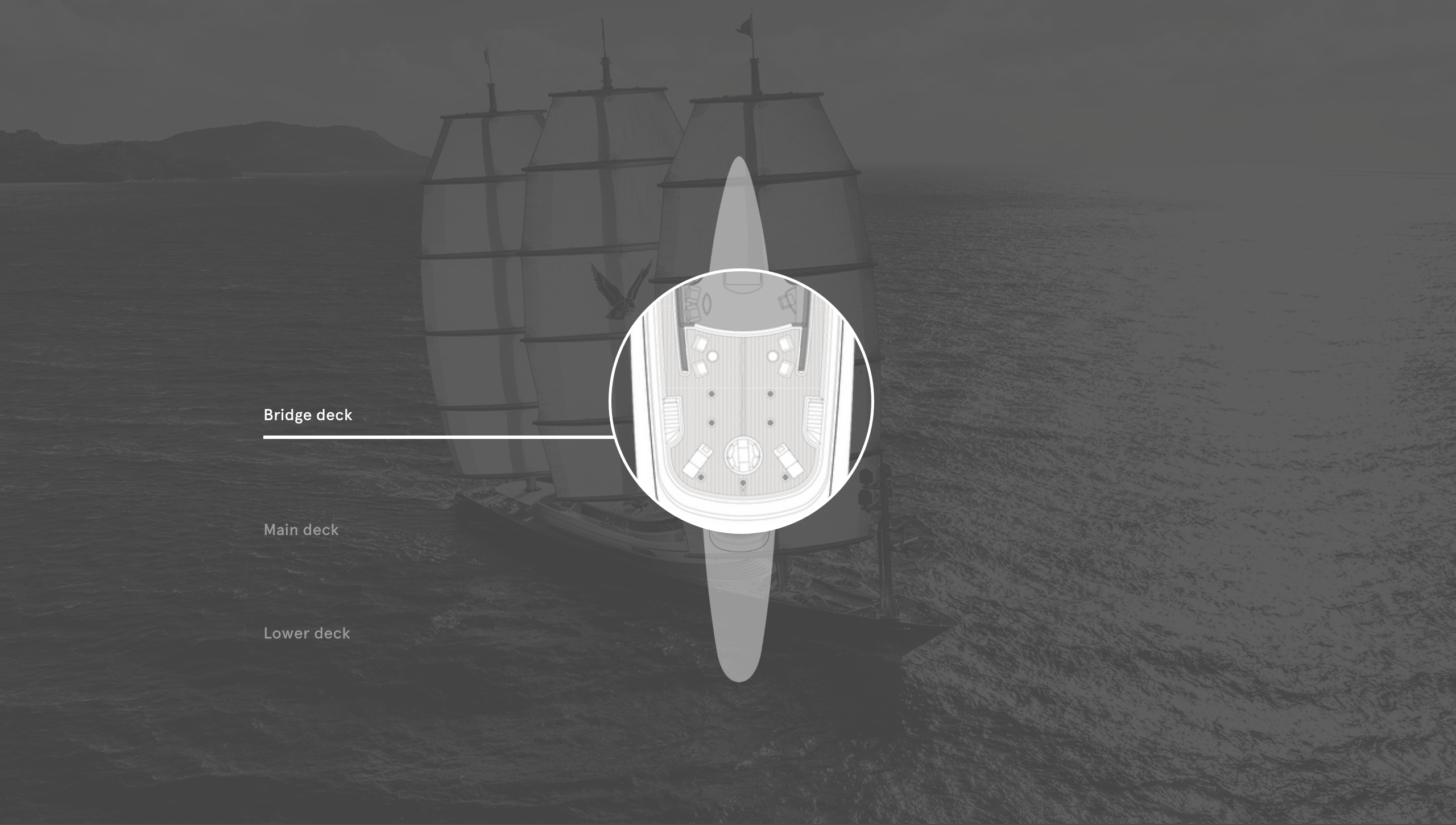
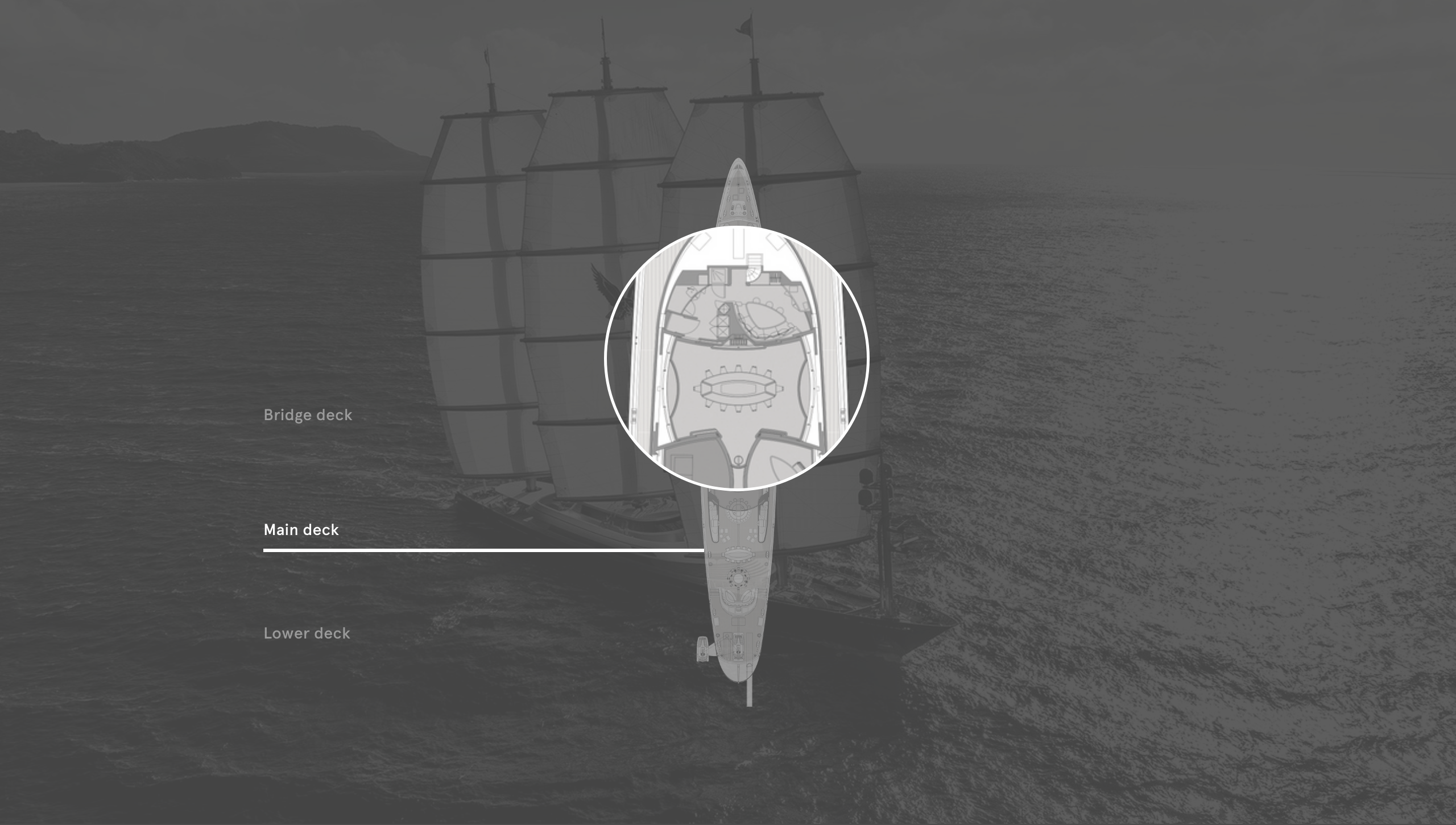
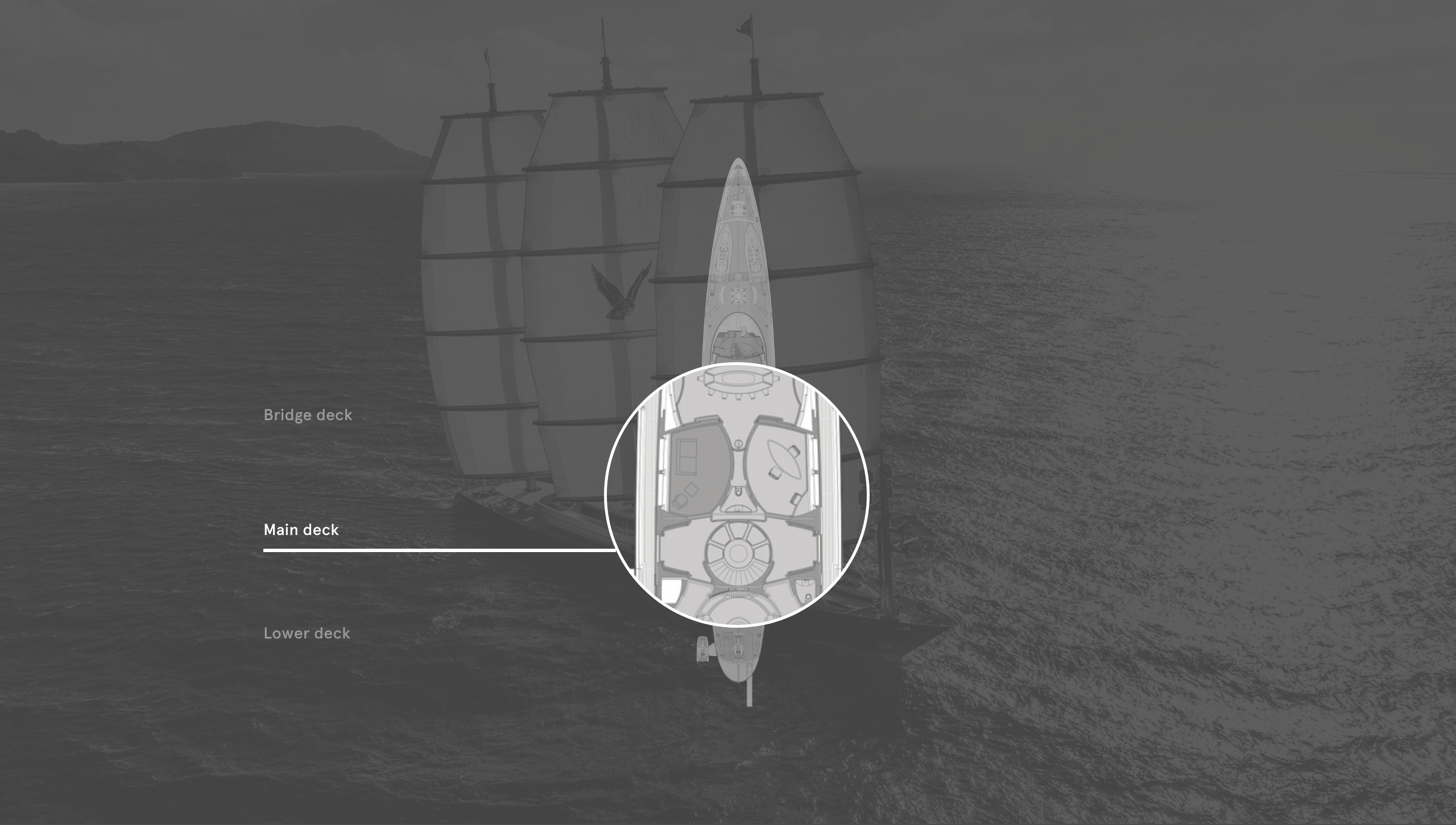
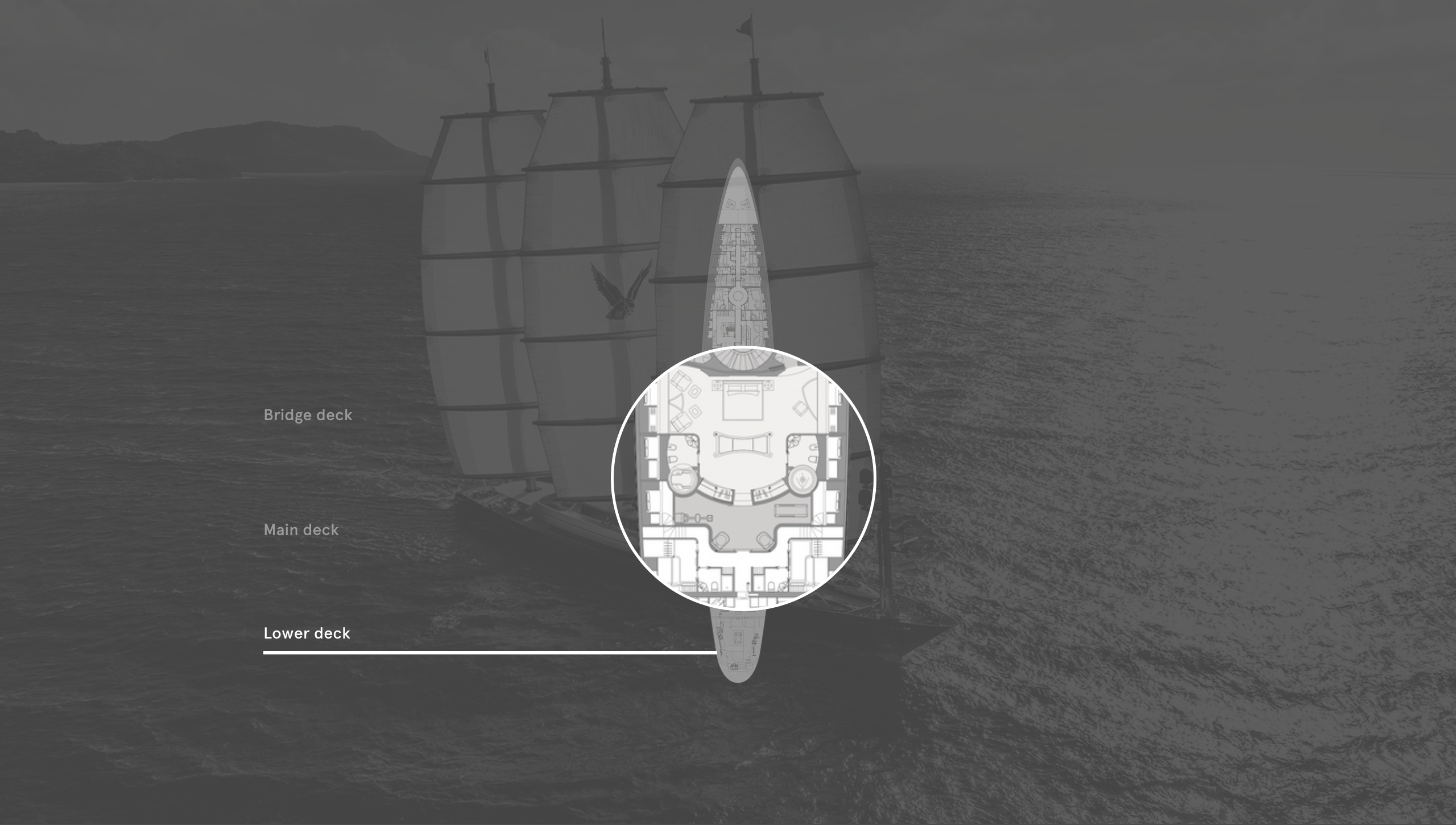
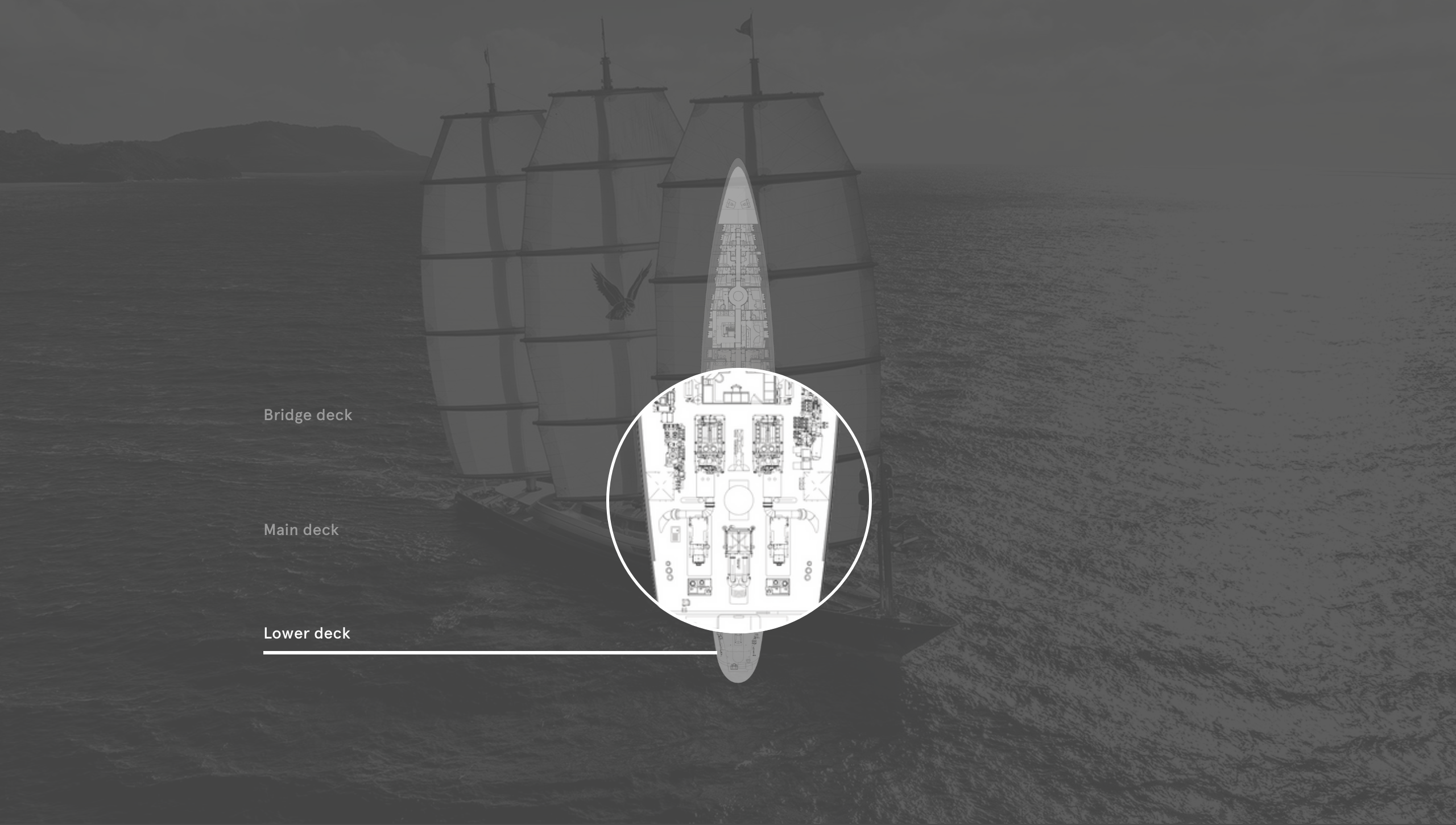

The VIP cabin offers an enviable view from the bed
A spa pool was removed and replaced with a rotating sunbed
There’s a separate formal dining saloon for interior meals
A cinema is located opposite the office
The gym aft of the owner’s cabin has been update with the latest equipment
New generators grace the engine room
LOA 88m | Gross tonnage |
LWL 78.3m | Engines |
Beam 12.6m | Sail area |
Draught 6m | Sails |
Generators | Speed under power |
Fuel capacity | Tenders |
Freshwater capacity | Owners/guests 12 |
Crew | Construction |
Classification | Builder/year |
Naval architecture | +44 23 8001 0017 sales@arksen.com arksen.com |
Exterior and interior design | Refit yard/year |
Refit interior design | +39 0586 415600 For charter |


